Did you know you can purchase an entire World War II Jeep body on eBay Motors for under $4000? As I found out recently, the iconic sheetmetal arrives in a humongous custom-built box that originated in the Philippines. Here’s a look at what it was like opening that box and unpacking a World War II Jeep.
You’re probably curious about how one can just buy a new body for an 80-year-old vehicle. It turns out that one company, MD Juan out of Manila, Philippines, started building World War II Jeeps in the late 1960s after running out of surplus Jeeps from Europe and Japan. The company discusses its history on its website:
MD Juan Enterprises, Inc. was founded in March 1967 by Dr. Maximino D. Juan, in response to the increasing demand for a sturdy, lightweight vehicle, particularly the multi-purpose jeep, in the Philippines. The company initially imported surplus World War II jeeps from Europe and Japan, but soon began producing their own bodies, which were popularly known as the Jeepstar.
In August 1969, MD Juan built its manufacturing plant in Novaliches, Caloocan City, and by 1970, the company had ventured into export markets in Japan, Australia/New Zealand, and the USA. MD Juan’s export concentration focused on jeep bodies and parts that were identified with World War II, such as the MB and Korean War M38. The company eventually expanded its production line to include civilian jeep models like the CJ series.
On MD Juan’s website, there’s an “Our Partners” page, which mentions the various companies that it supplies old Jeep bodies to; among those companies is C&C Equipment out of Nashville, Indiana (incidentally, you may know C&C from its rather popular YouTube channel). It’s C&C Equipment’s eBay listing that originally inspired this whole project idea:
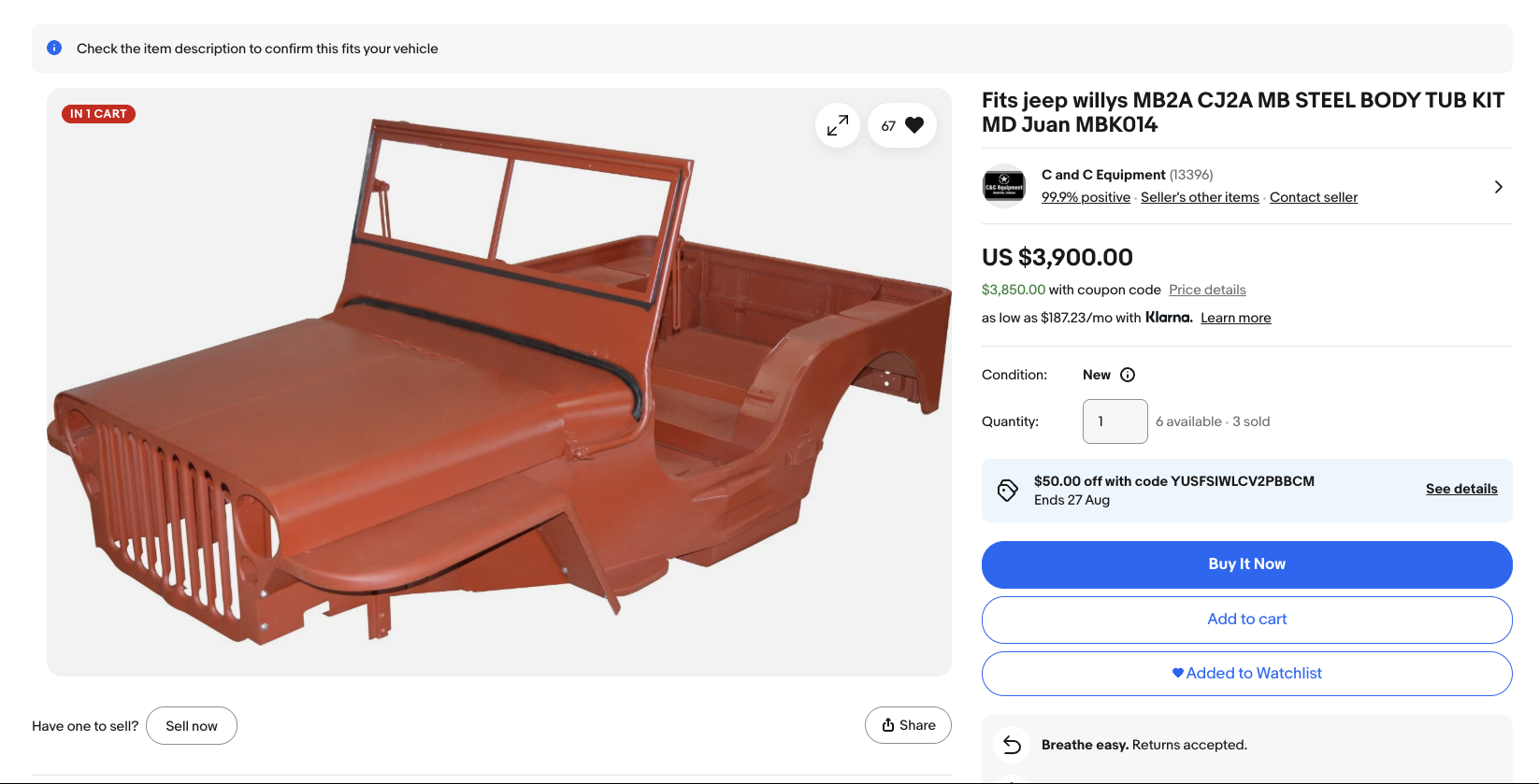
So naturally, I bought the above Willys MB body from C&C, and it came out to $4,441.88 after shipping. C&C communicated to me who would be shipping my huge box, when it would arrive at my local facility, and how I could schedule the ideal drop-off time at my house. One day, a humongous truck just showed up, and a gentleman expertly lowered the Willys down onto four dollies I had purchased.
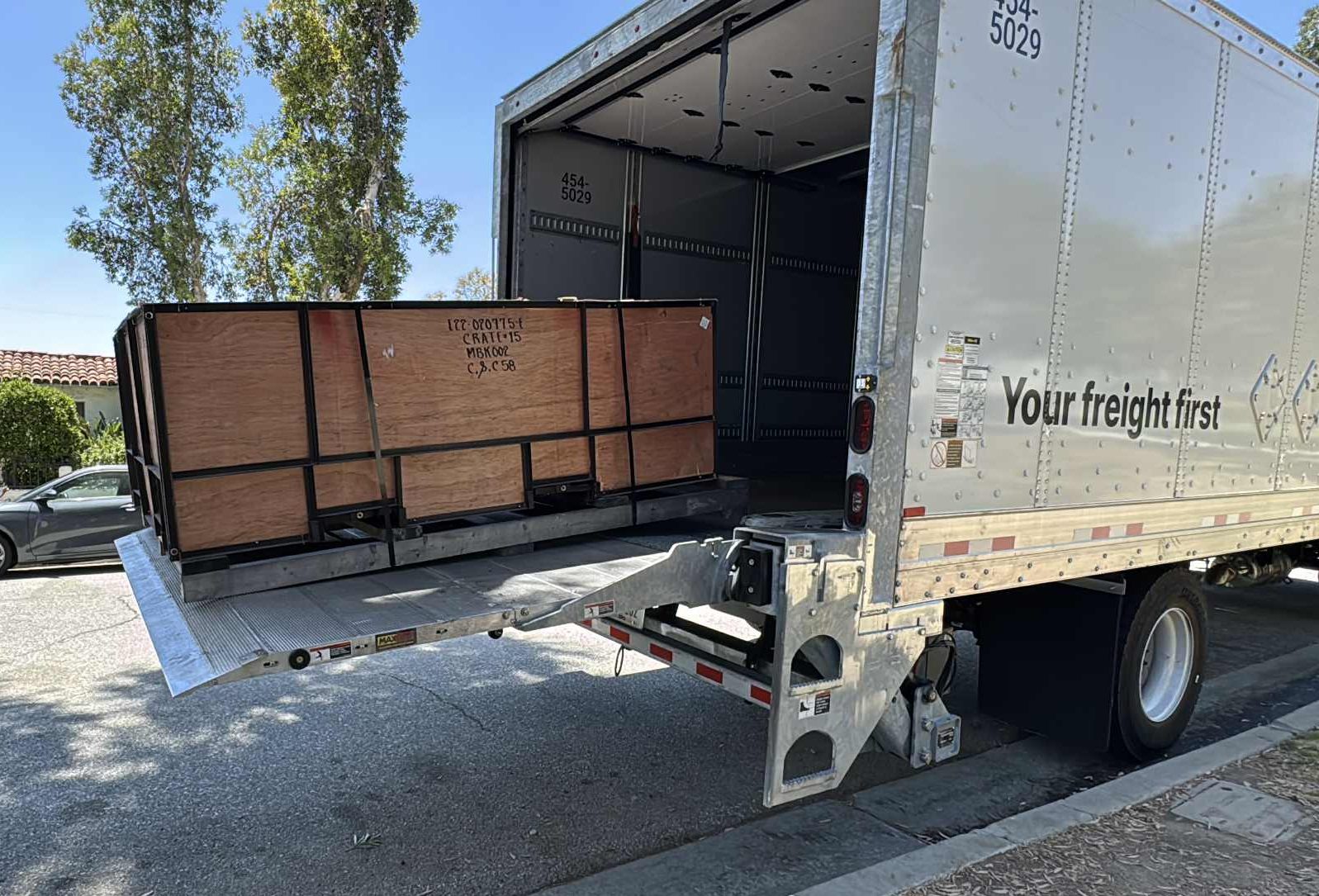
Once on the dollies, the 700-ish pound box could easily be rolled into my driveway, where Jason Torchinsky and I unboxed it.
The Unboxing
Though most WWII Jeeps were shipped overseas rolling on their own wheels, some made their trek in a wooden box, with their windshields folded and their wheels stored in their body tubs — all to maximize how many vehicles could fit in the hull of a cargo ship. Here you can see Ford’s official uncrating instructions for the WWII Jeep:
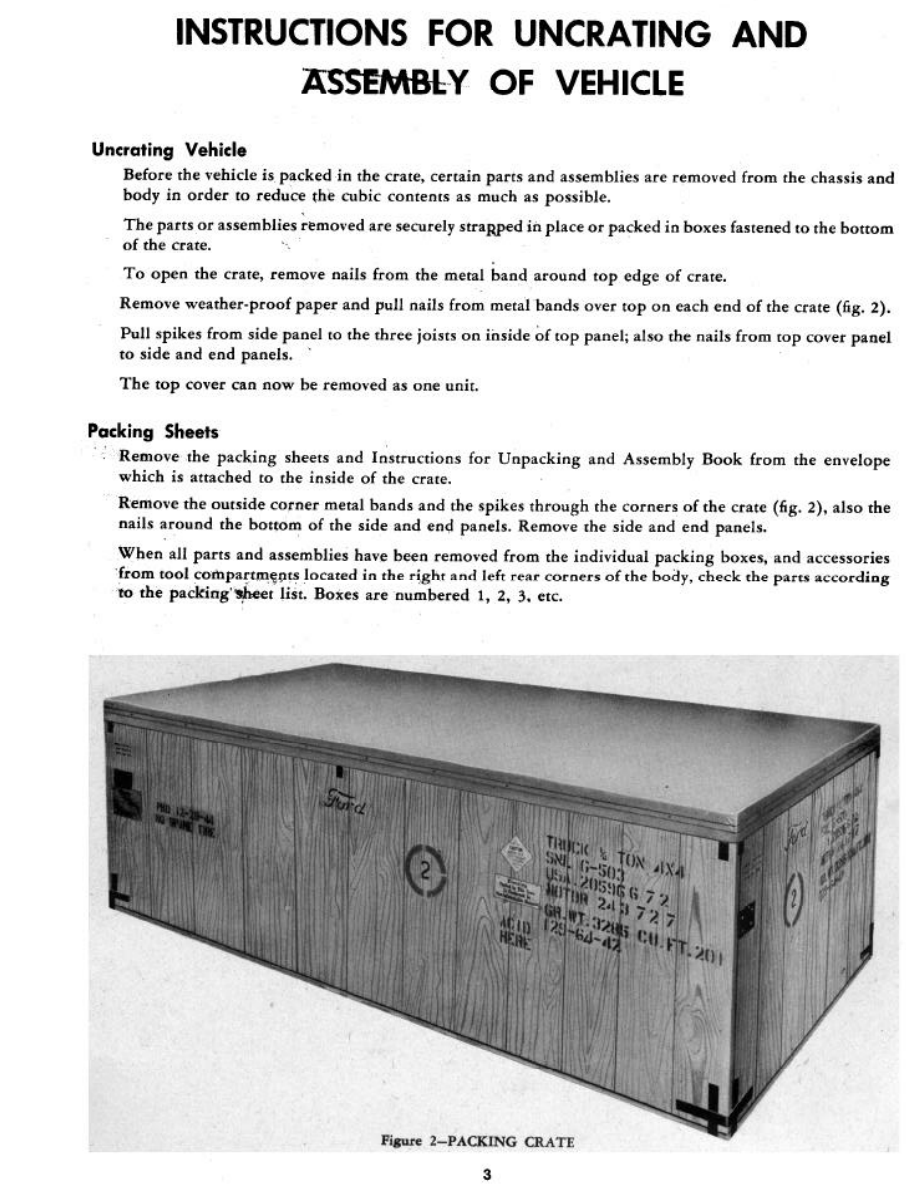
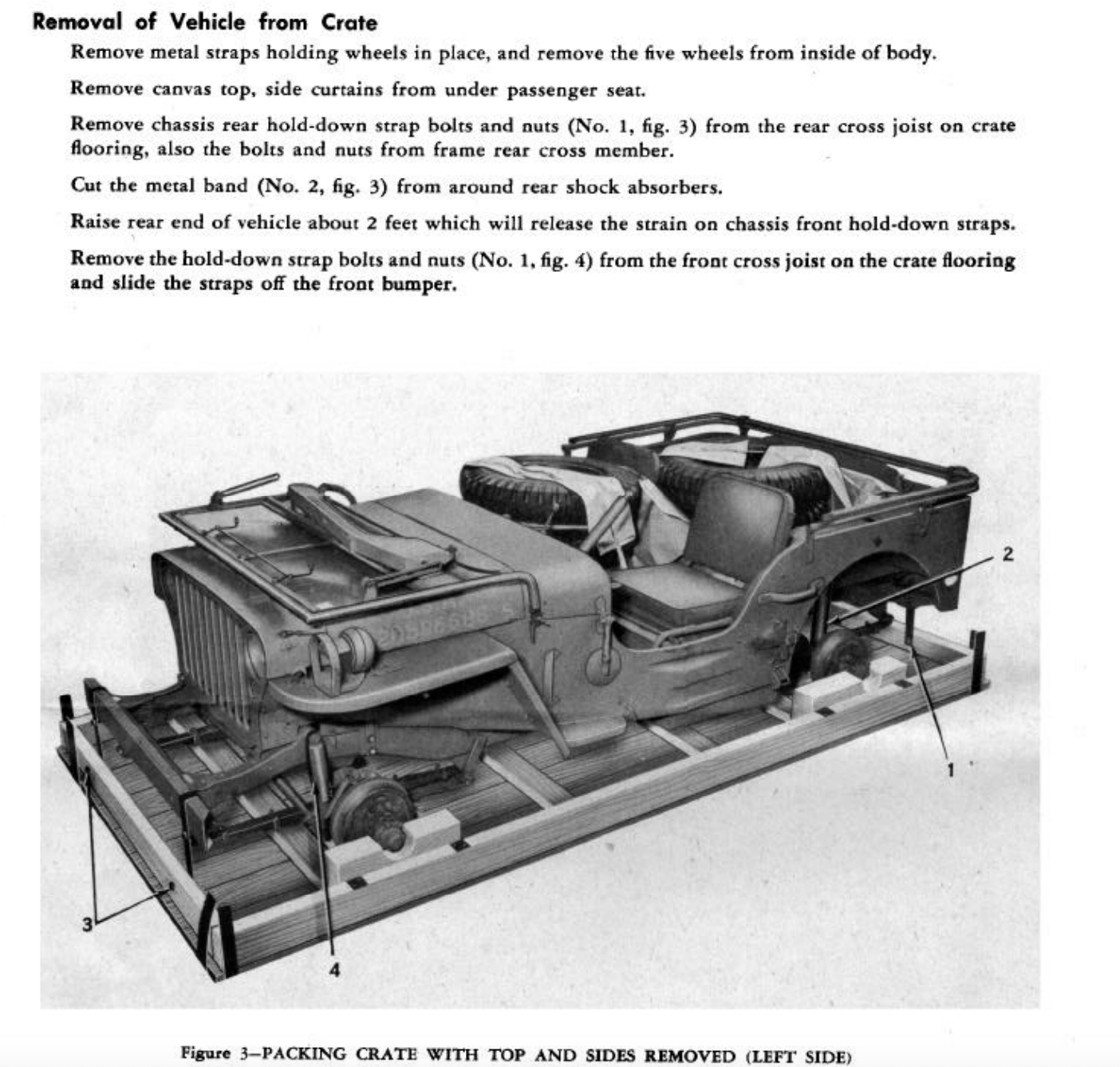
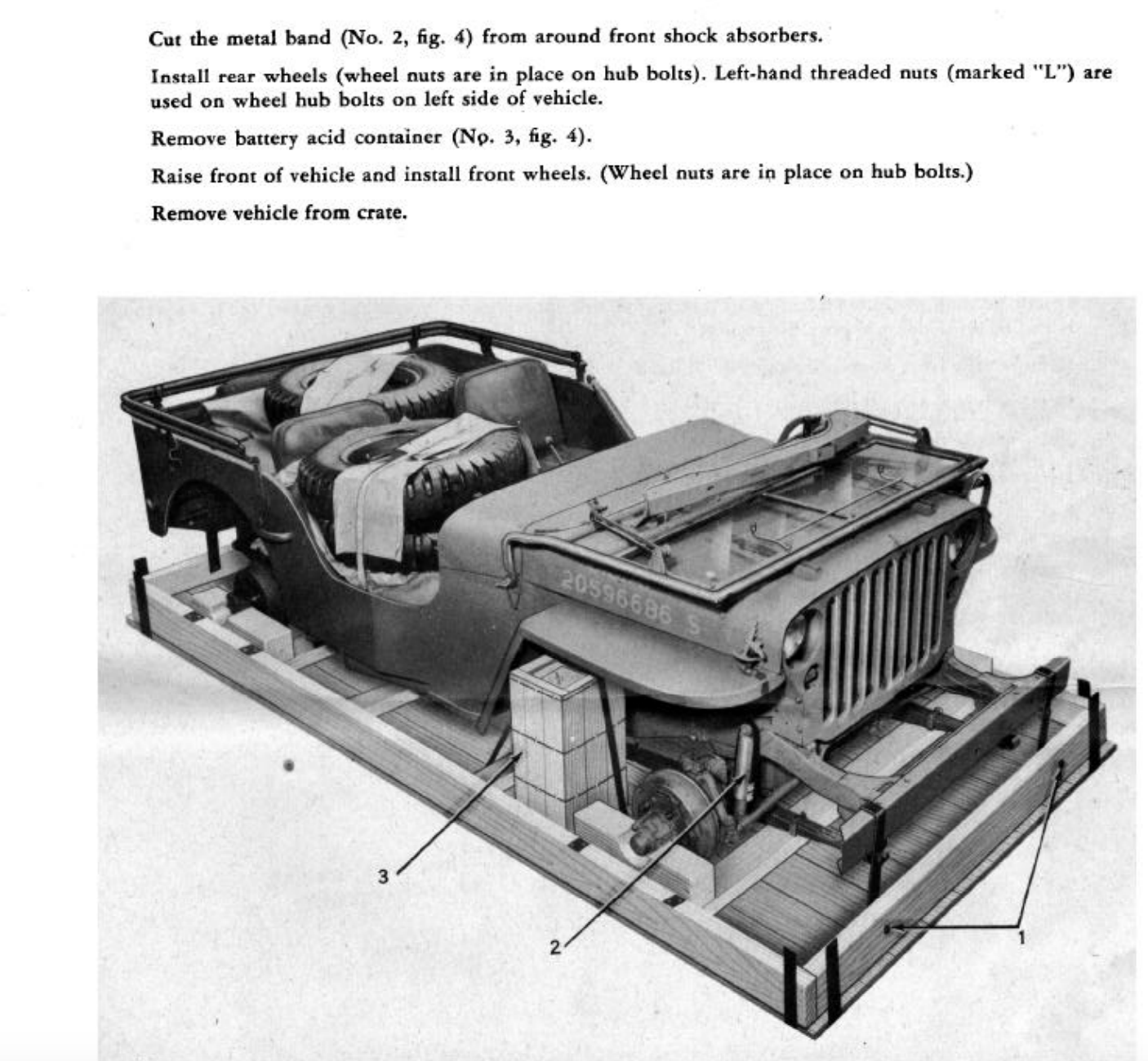
The Jeep-in-a-crate idea was romanticized after the war by a widespread myth that surplus Jeeps had been found still in their wood crates, and could be purchased for just $50. Most people consider this folklore, but this dream of a “holy grail” barn find in a box is something I couldn’t shake as I unboxed an actual Jeep-in-a-crate. It showed up in a giant box roughly 8 feet wide, 5 feet deep, and 3 feet tall.
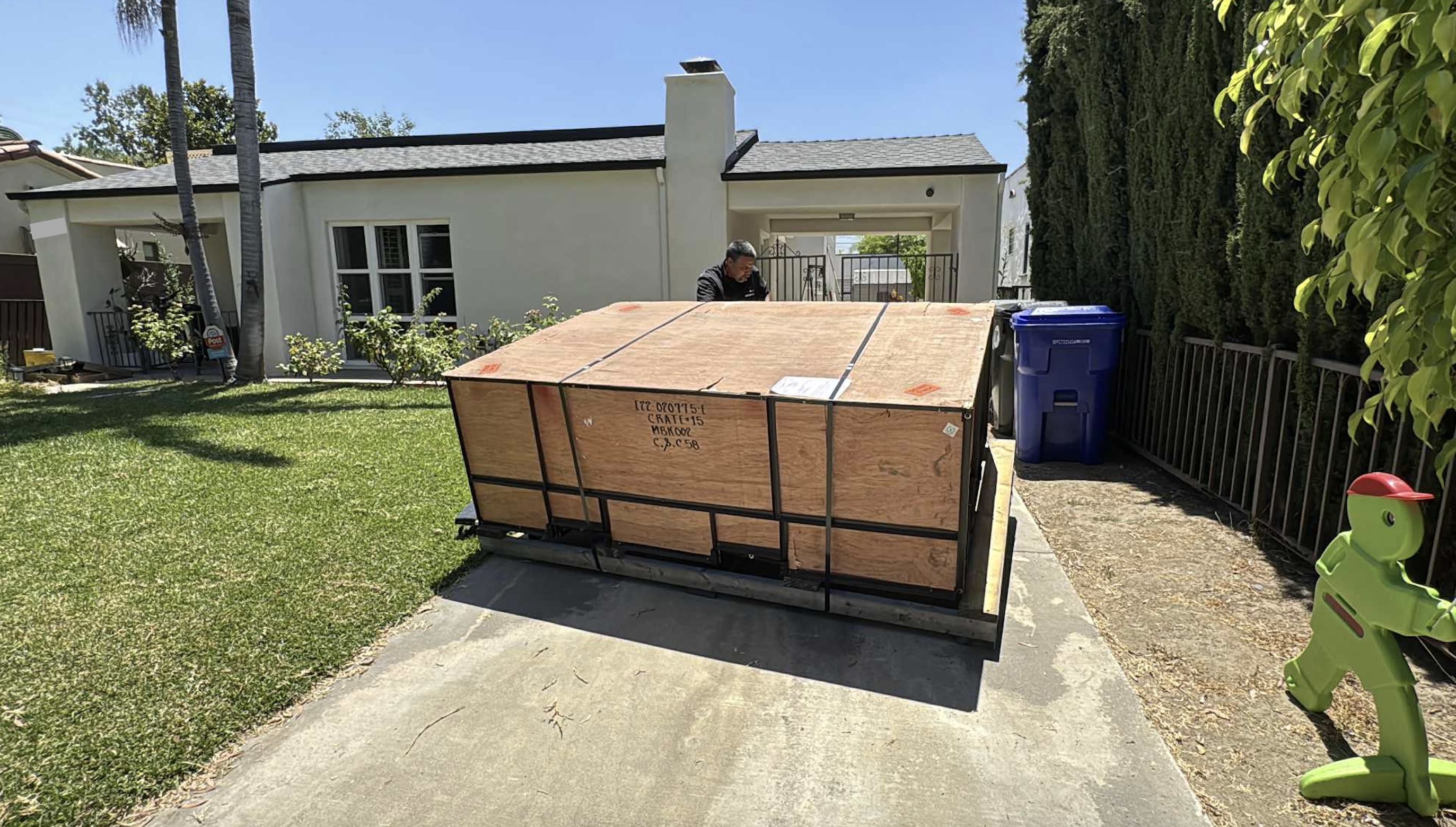
To help me with the unboxing, I enlisted my partner-in-crime, Jason Torchinsky, a man who has a history of unboxing entire automobiles from overseas.
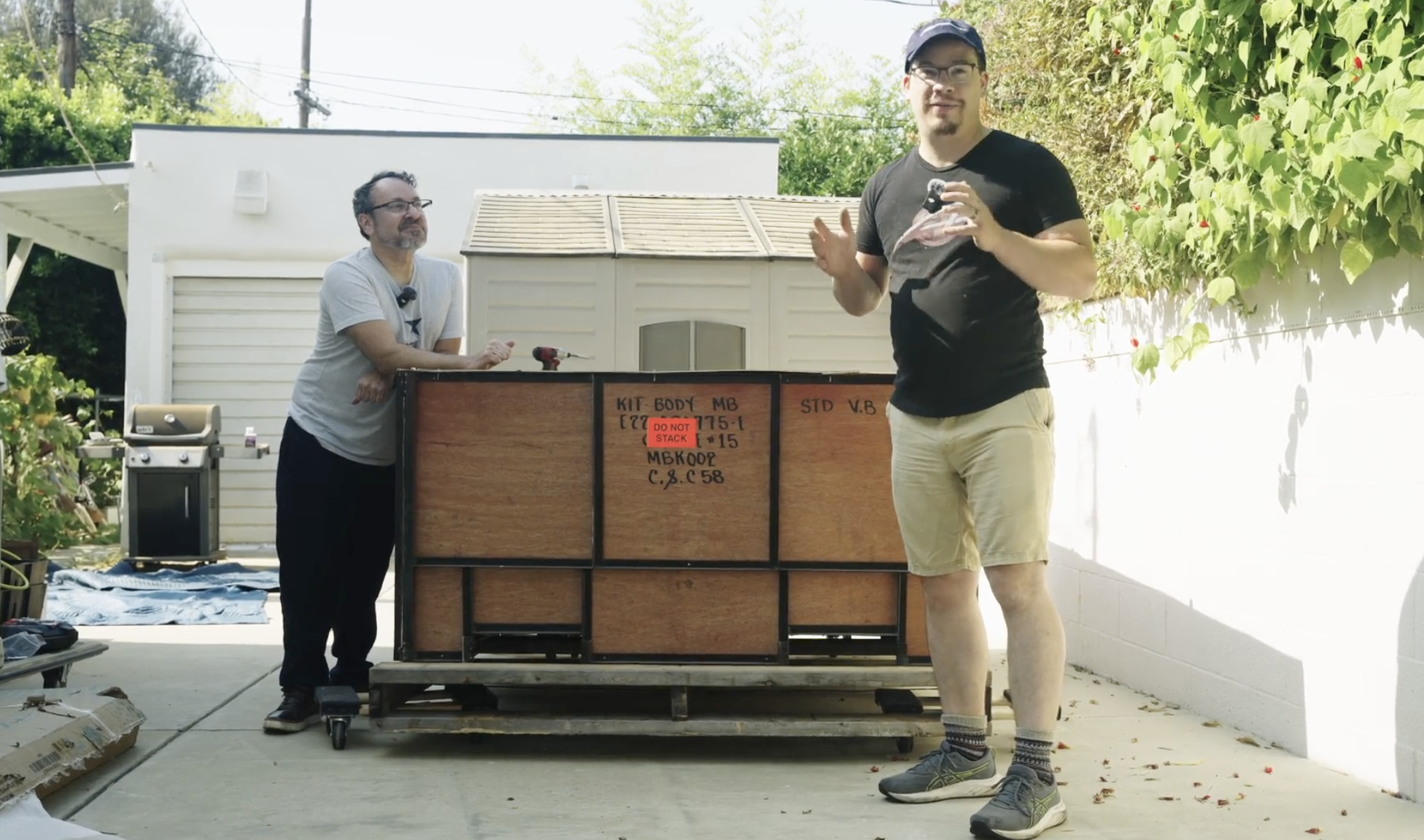
Step one involved me unscrewing the thin wood lid from the crate:
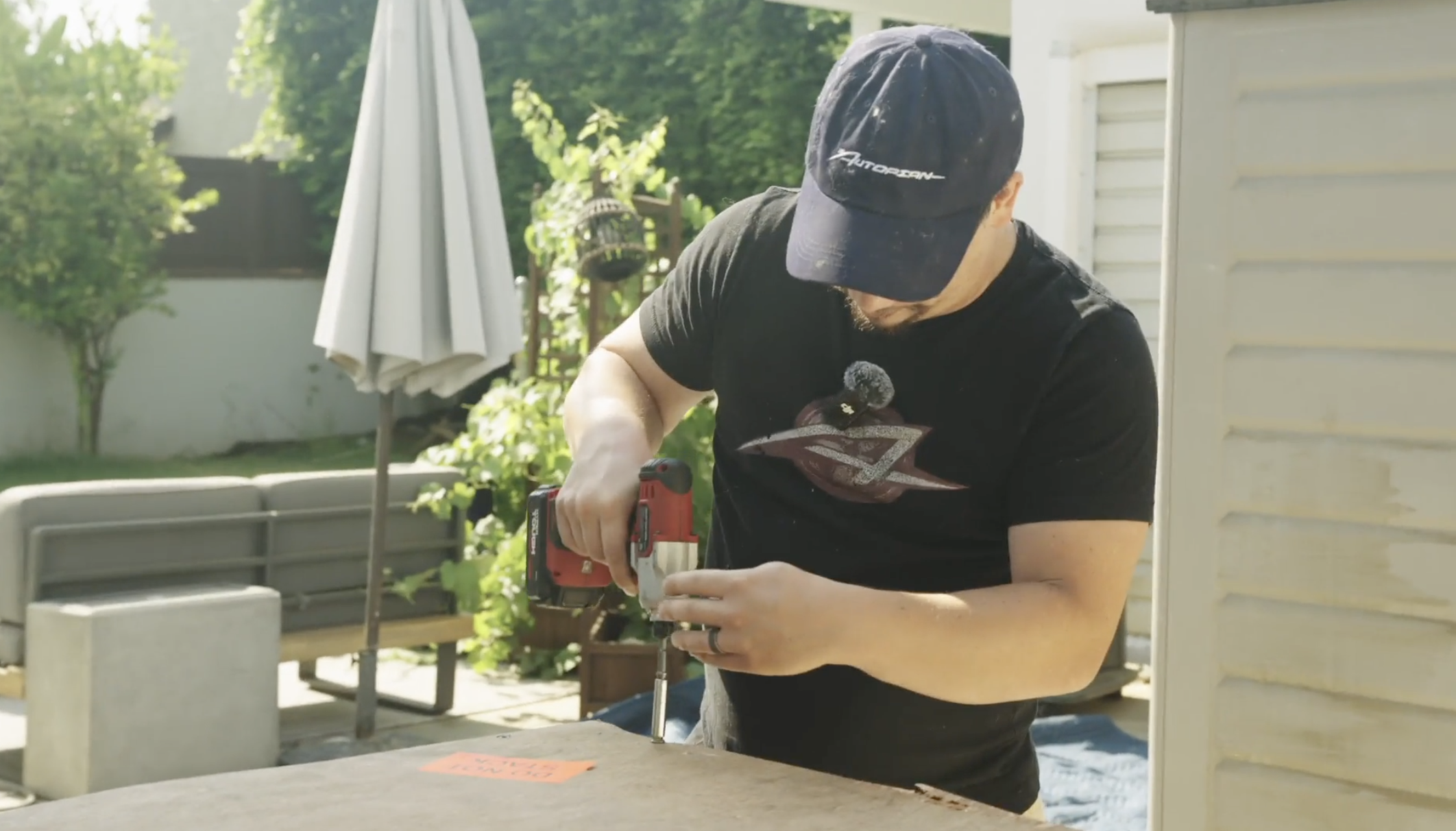
Then I cut the metal straps with a dull cut-off wheel: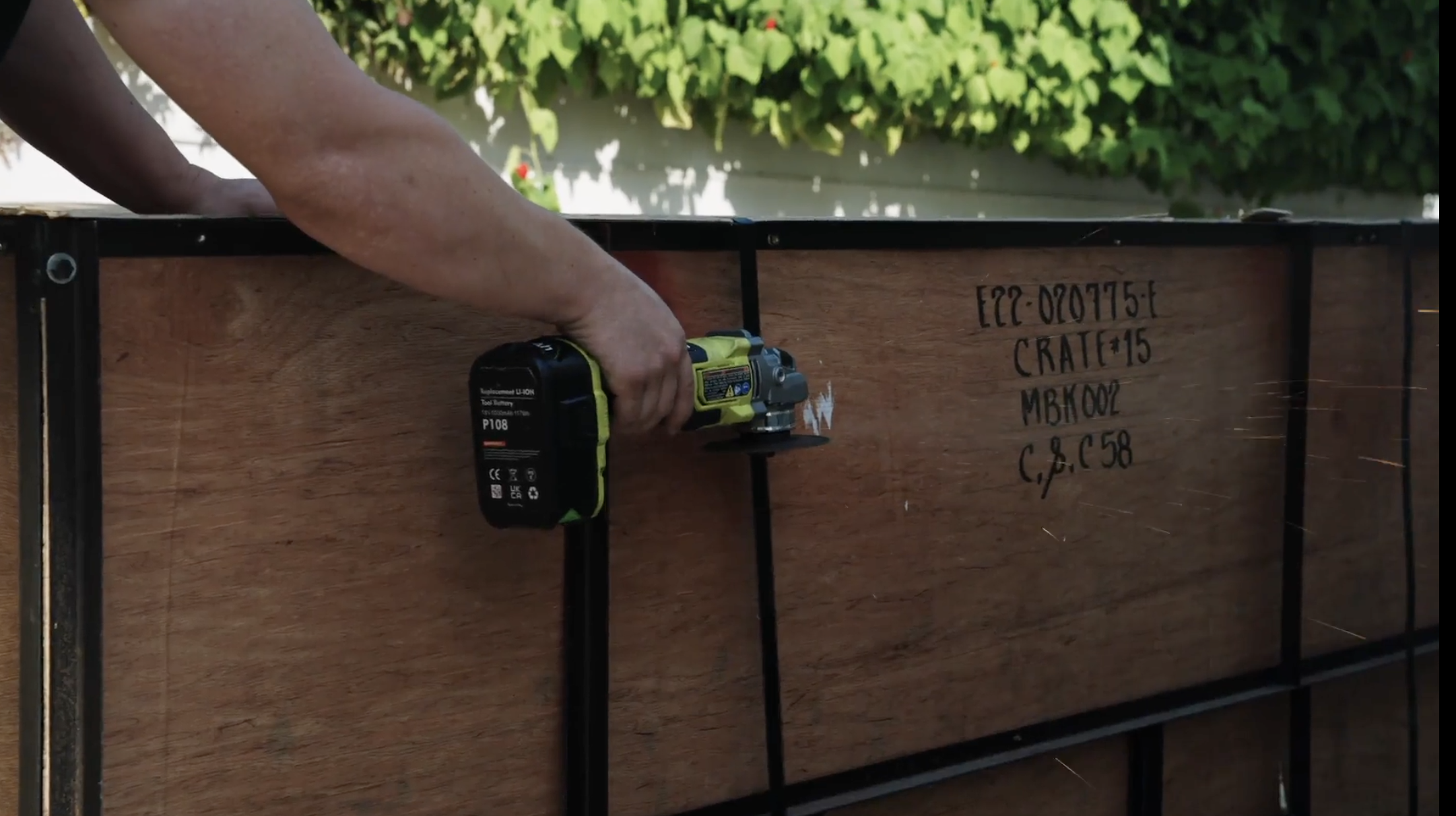
And with that done, the lid came off and we saw…
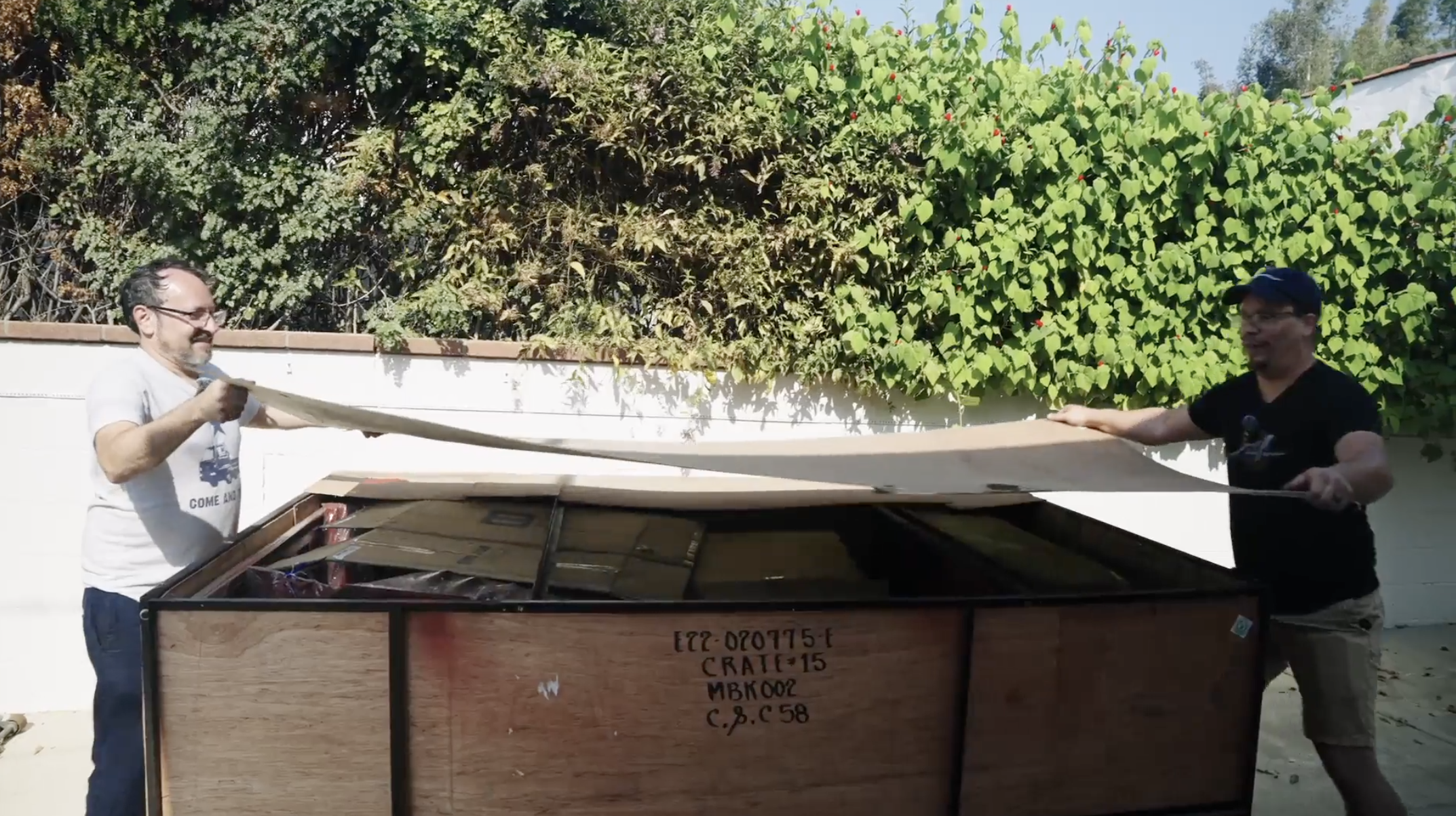
Mostly cardboard.
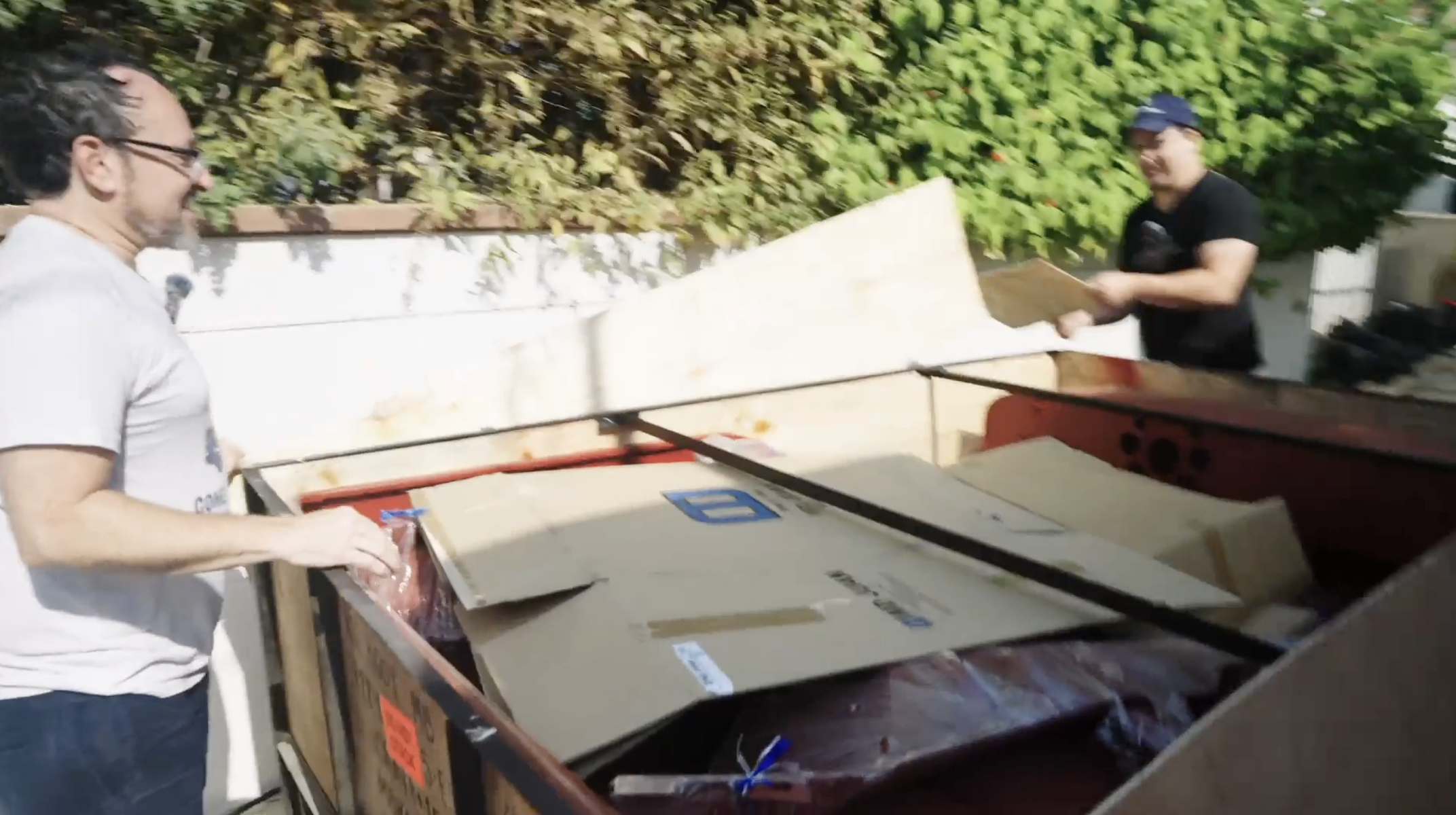
But removing that protective cardboard revealed true glory. There, on the toolboxes integrated into the rear wheel-wells, sat the front fenders that created the now-iconic “flat-fender” designation of Jeeps.
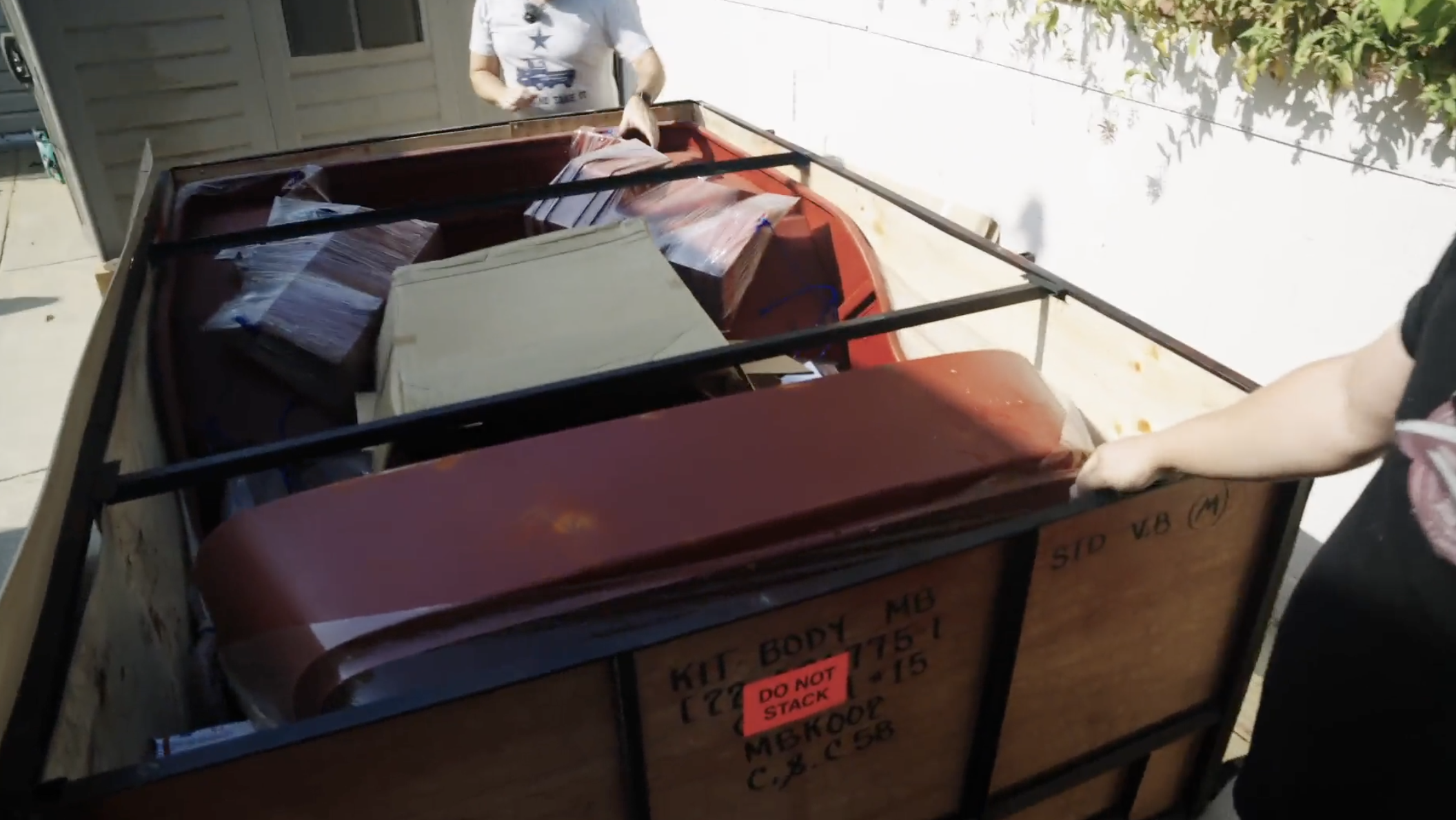
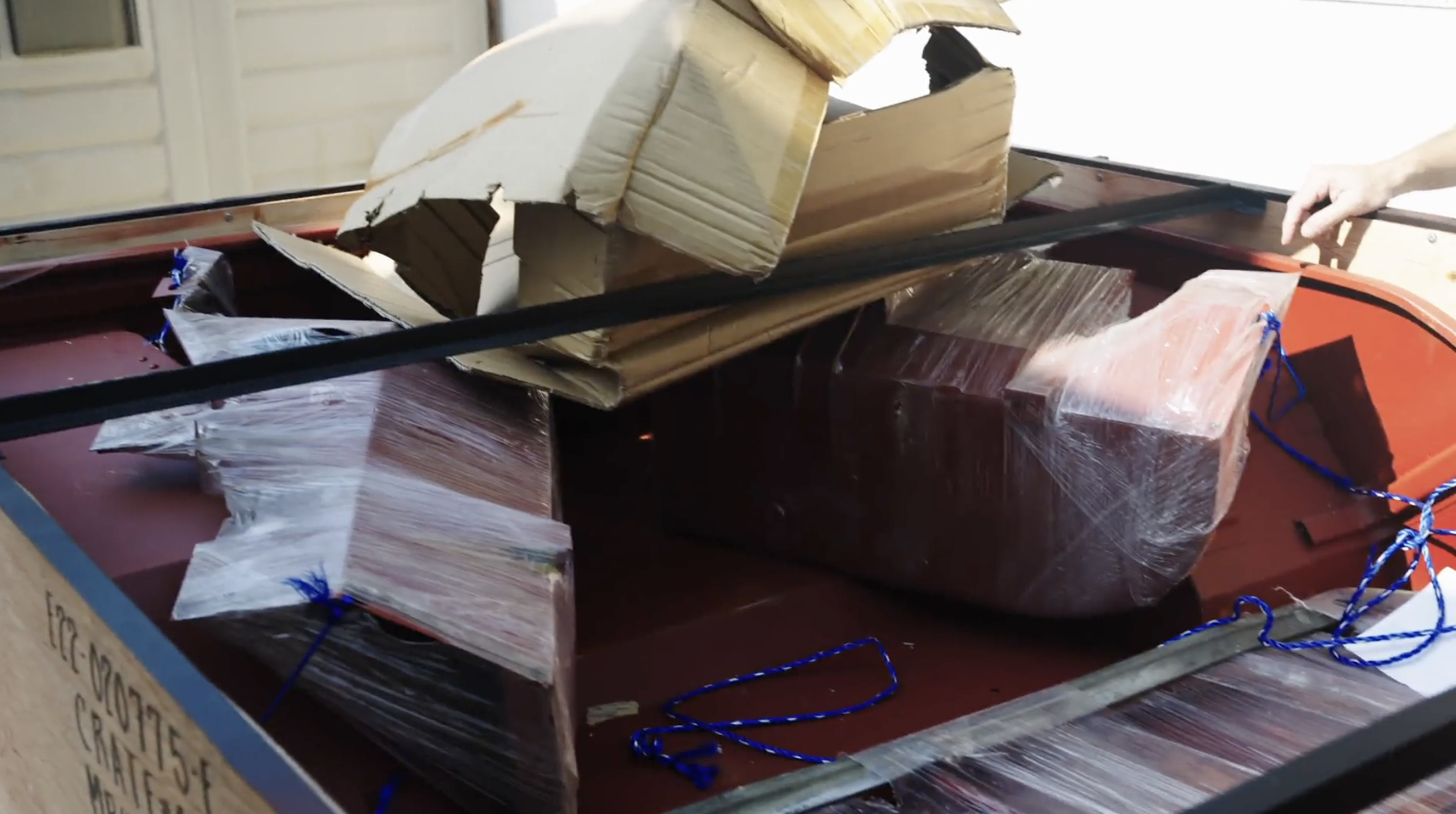
We removed the fuel tank that we had purchased in addition to the tub:
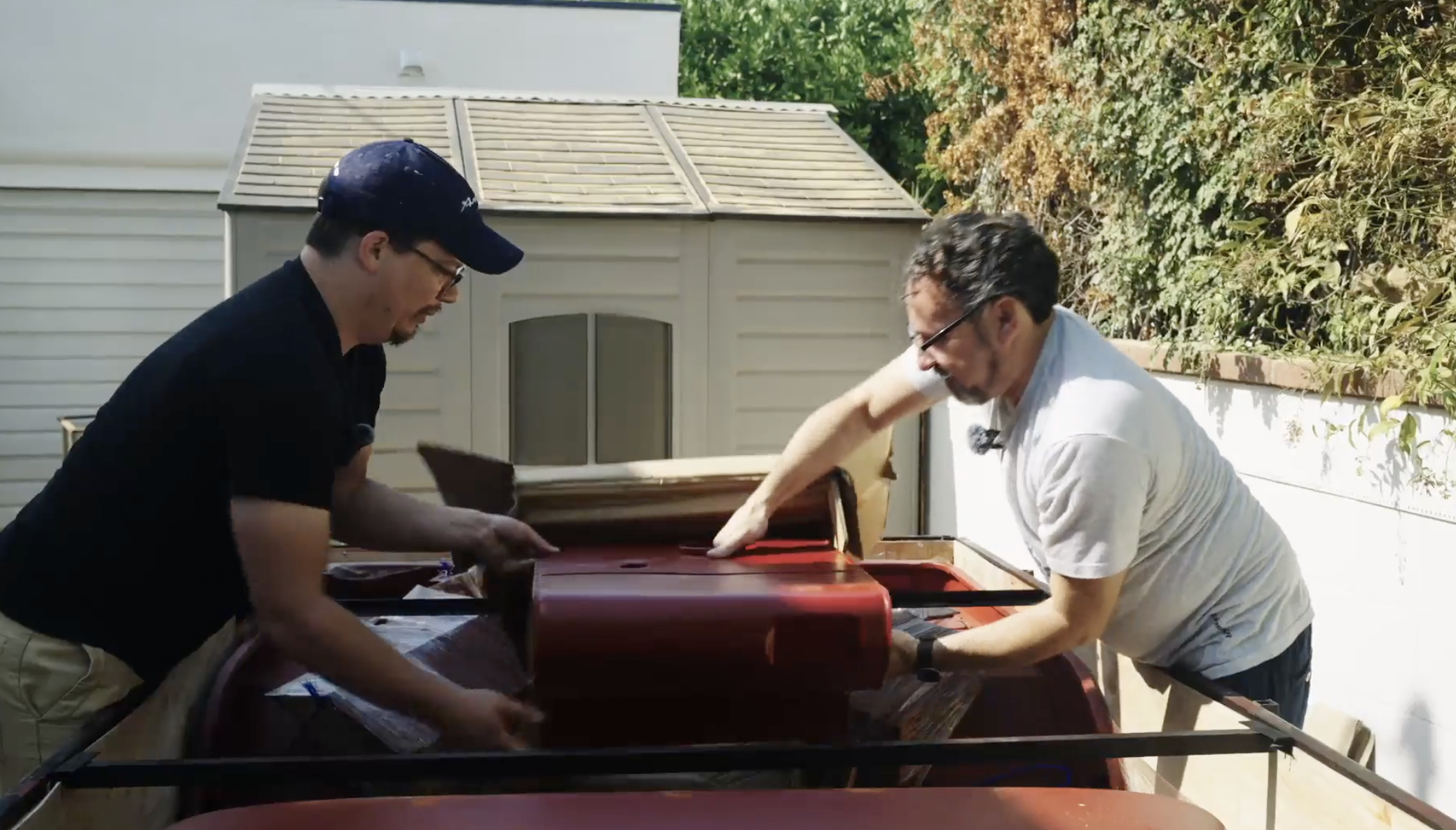
And below it was the rest of the body — the grille, the windshield and the hood — all tied down with twine and protected from damage via strategically-placed cardboard and lots of plastic wrap:
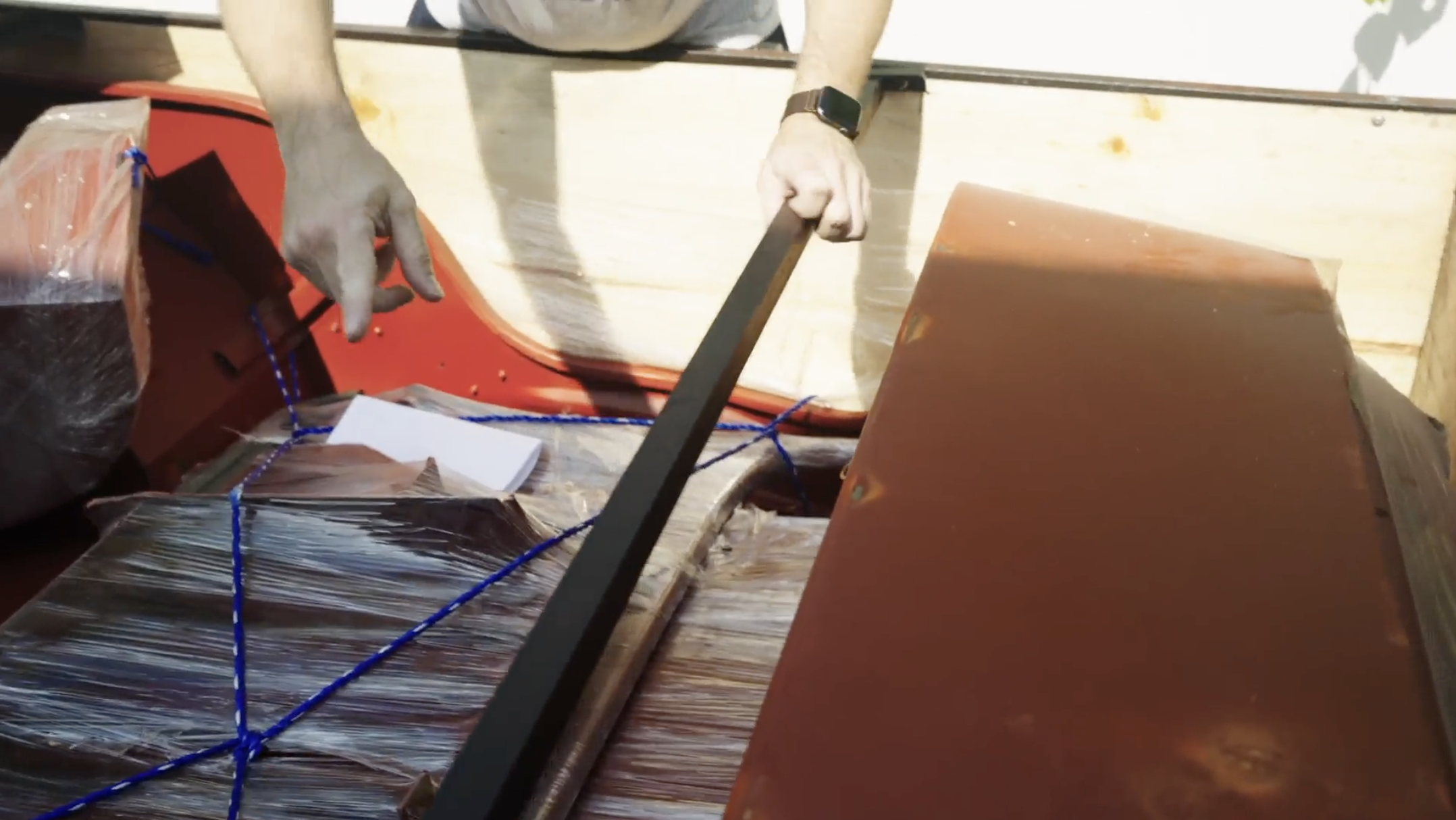
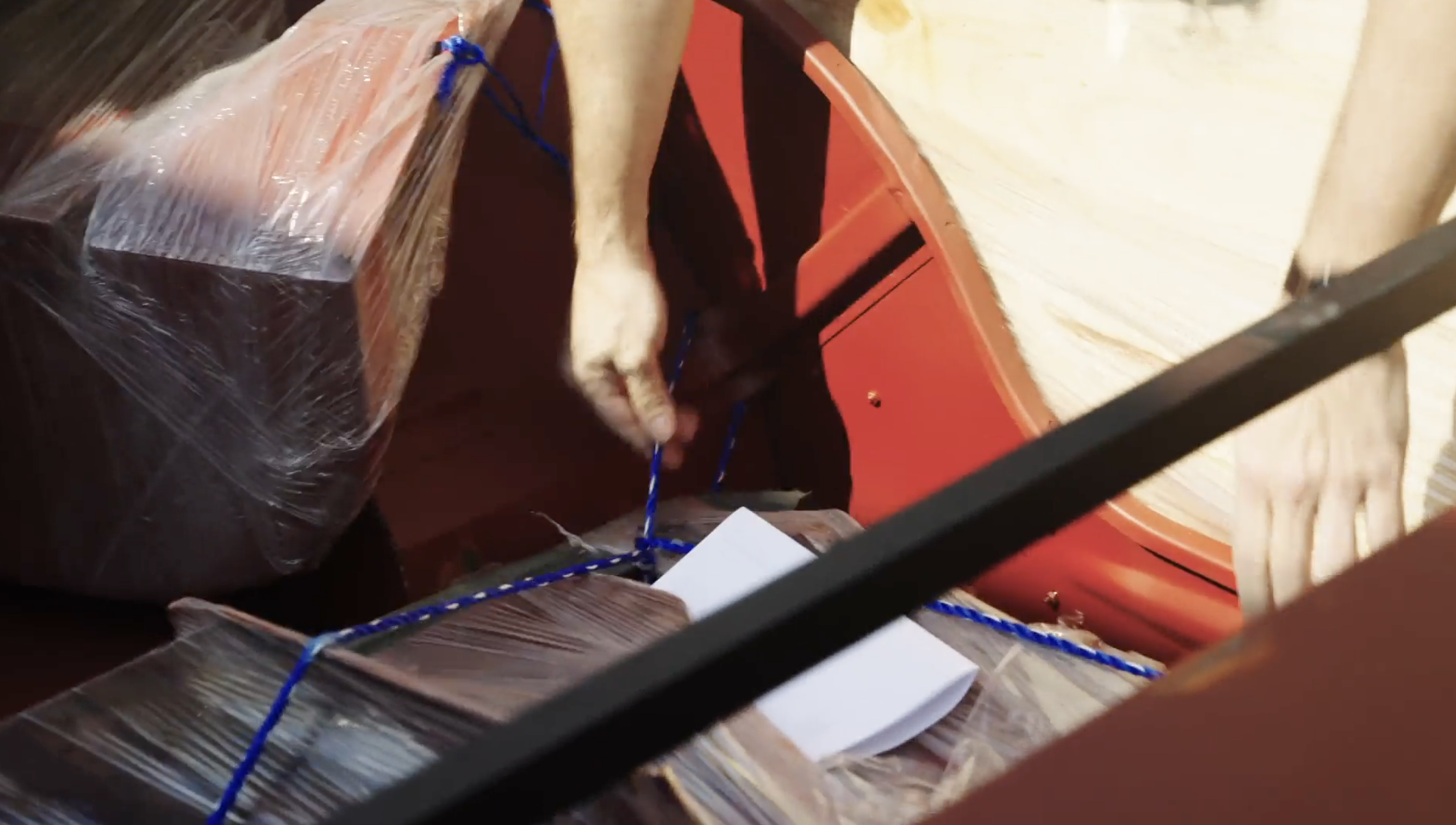
The first thing we did was remove the grille; wow what an iconic grille:
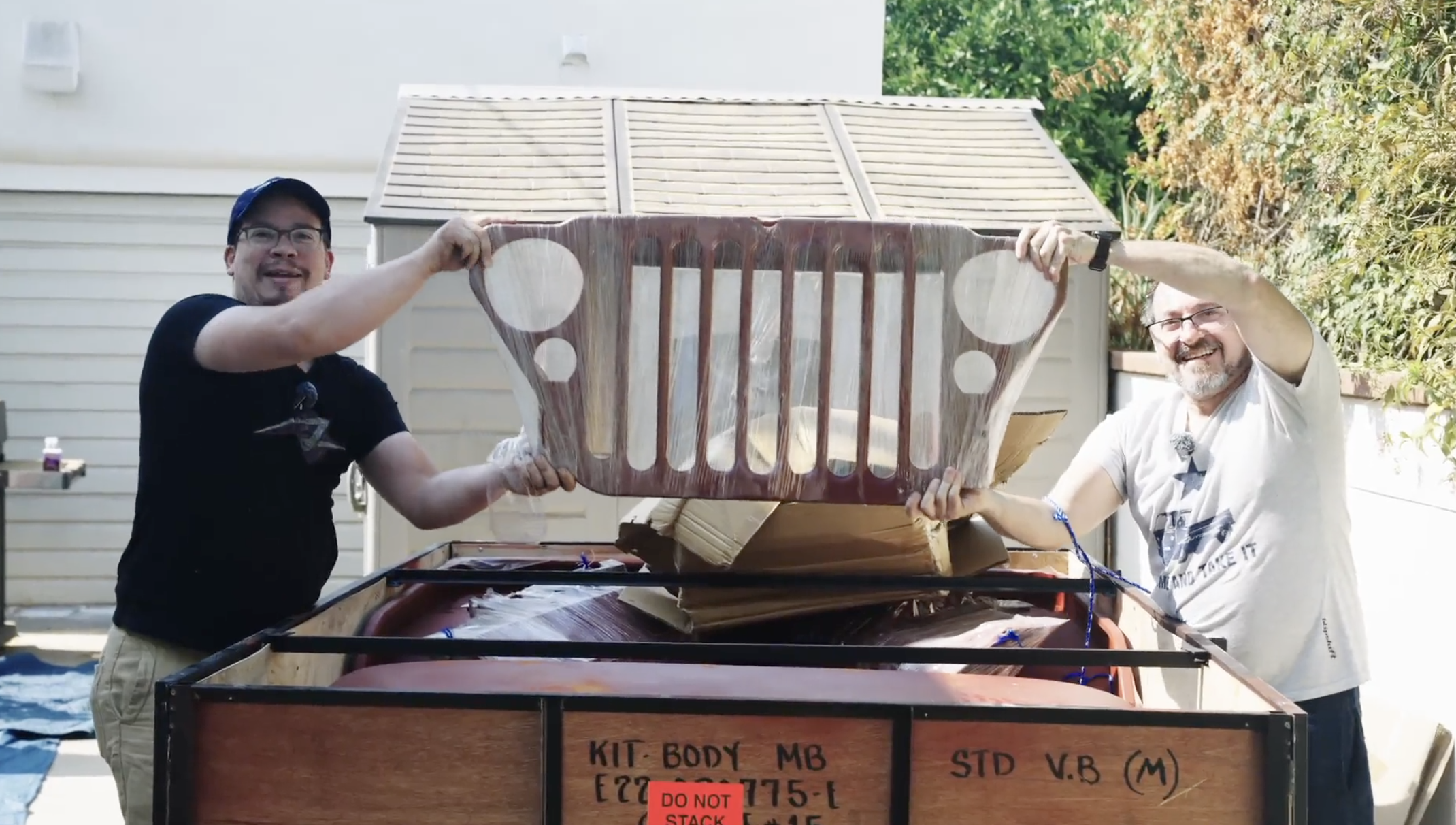
That revealed the hood and windshield below, all plastic wrapped. (Note that the windshield came with a rubber seal, but I’ll have to buy glass later):
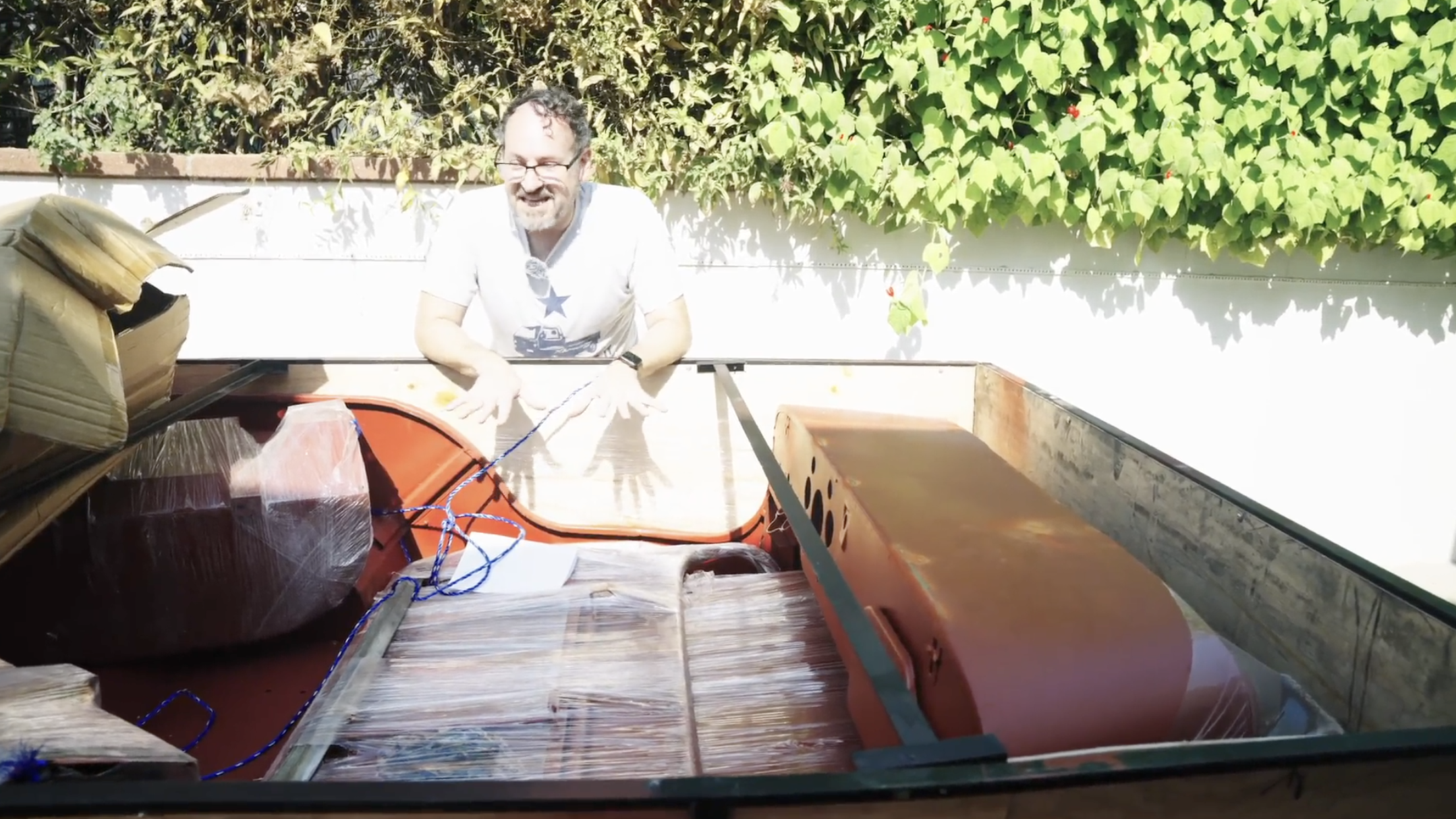
Before taking out the windshield, Jason and I cut the twine holding the two fenders to the back of the tub:
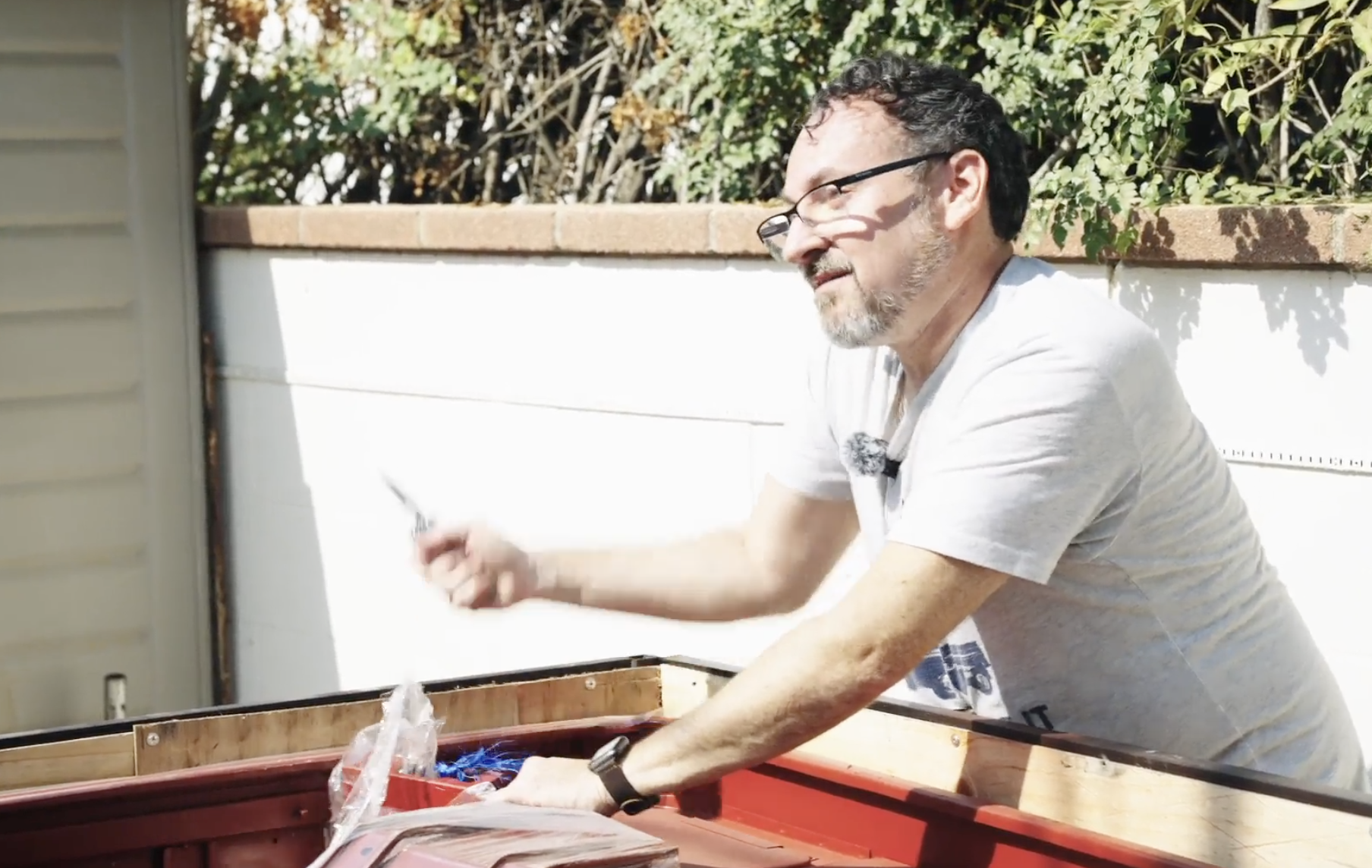
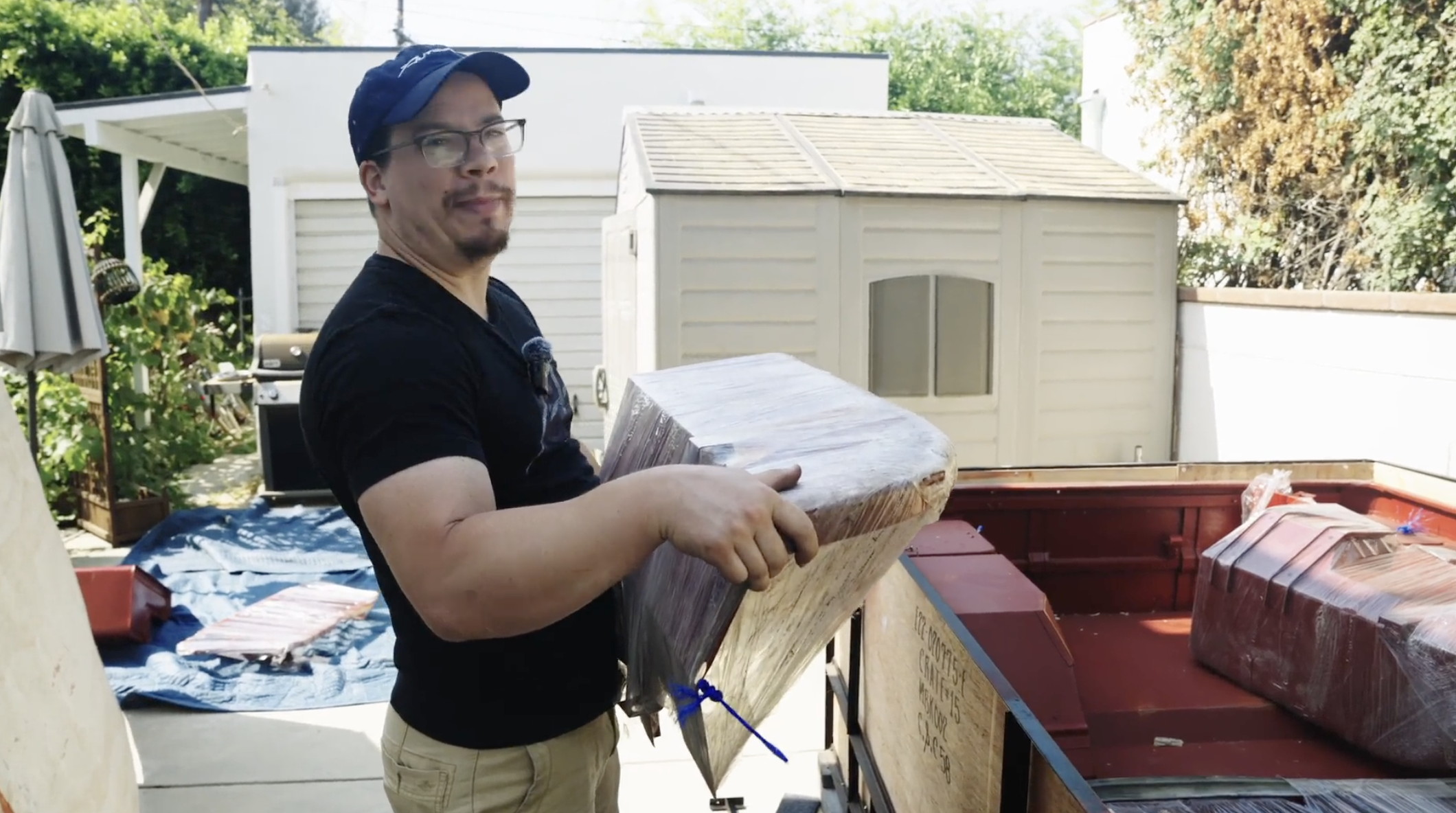
Notice in the photo below of Jason and me removing the windshield, with the front fenders no longer in the rear of the tub you can see the clever toolboxes integrated into the rear wheel-wells:
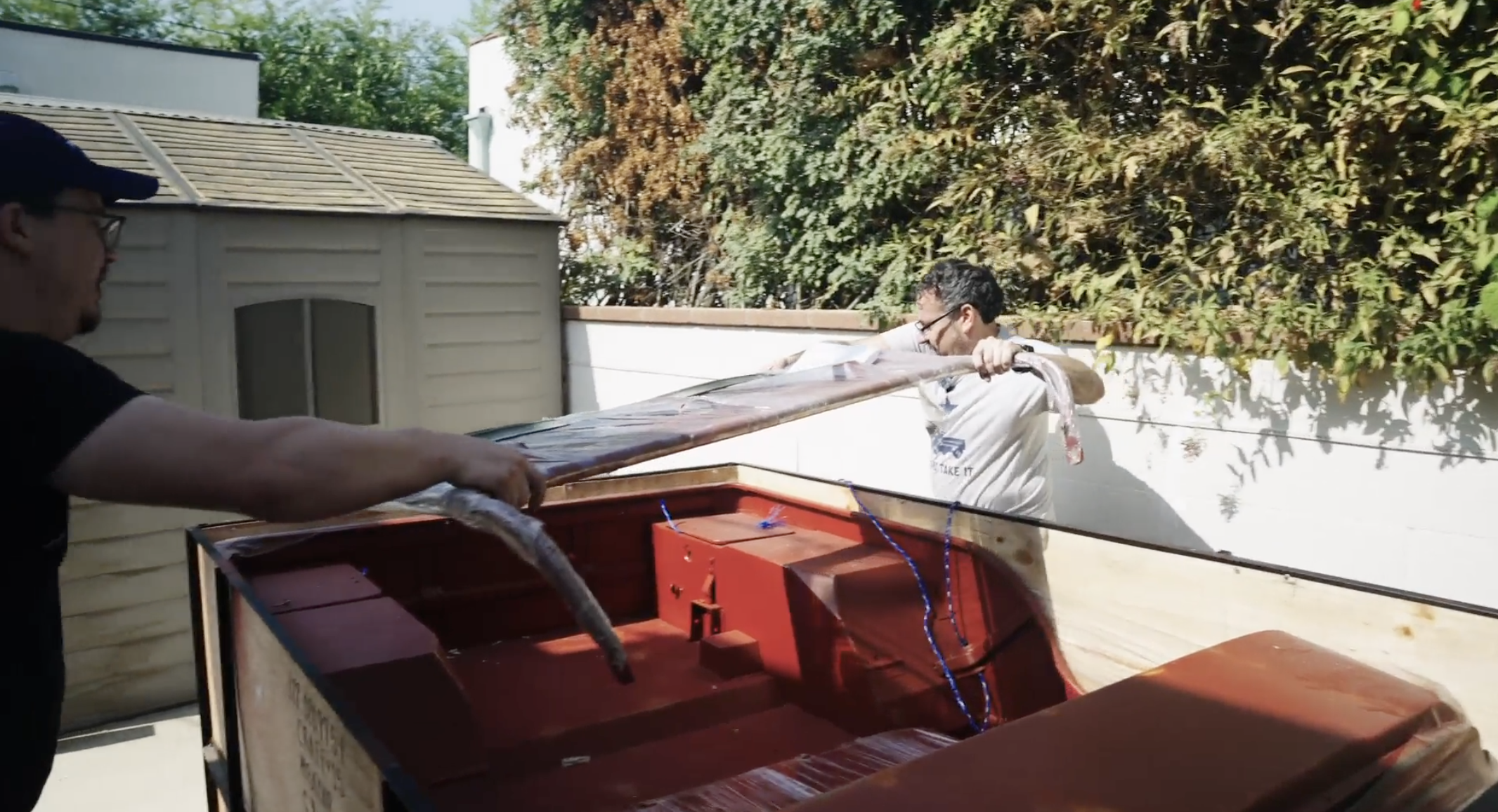
With the windshield out, we removed the hood:
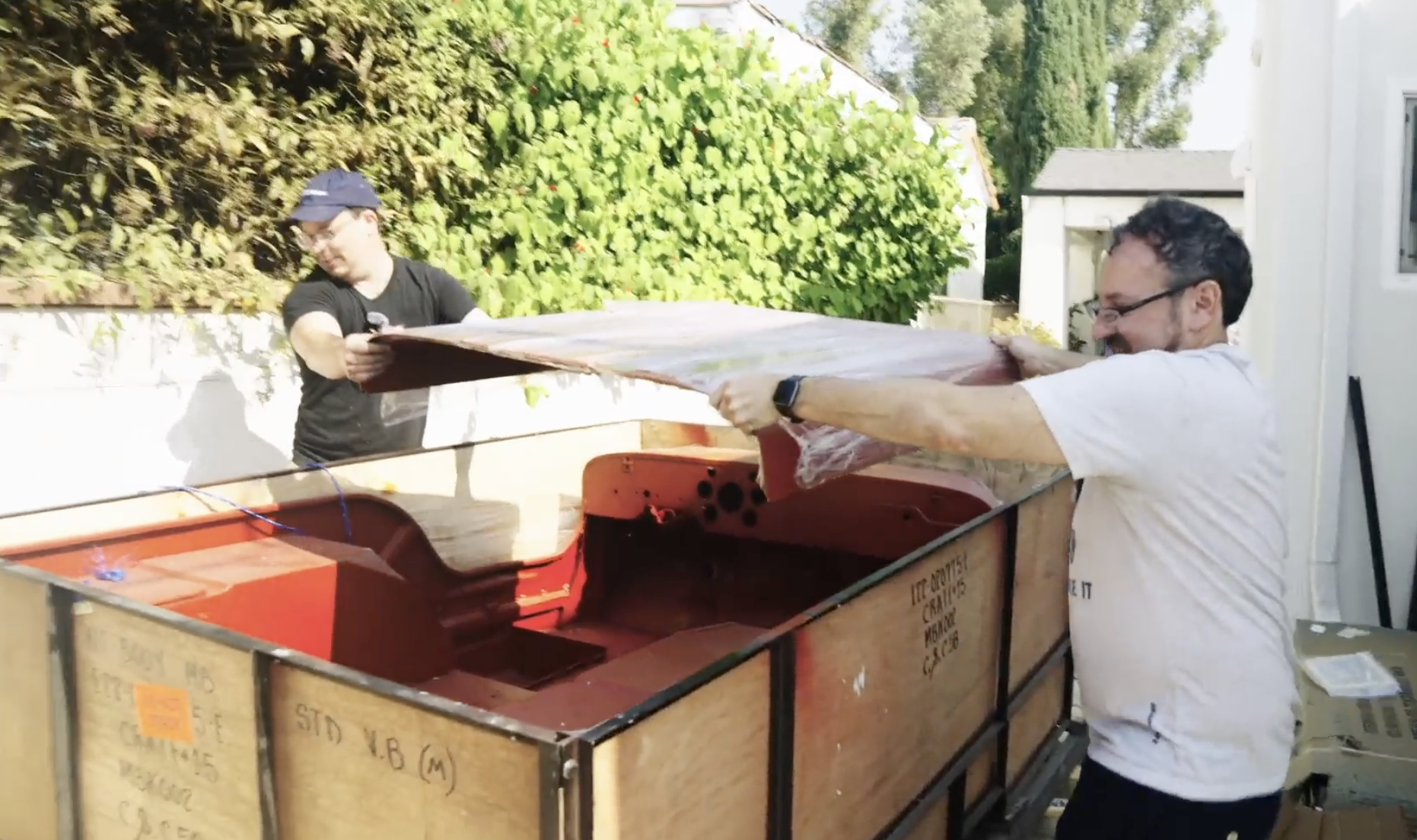
And that was everything! There aren’t many parts to a WWII Jeep body — just a grille, hood, two fenders, and a body tub.
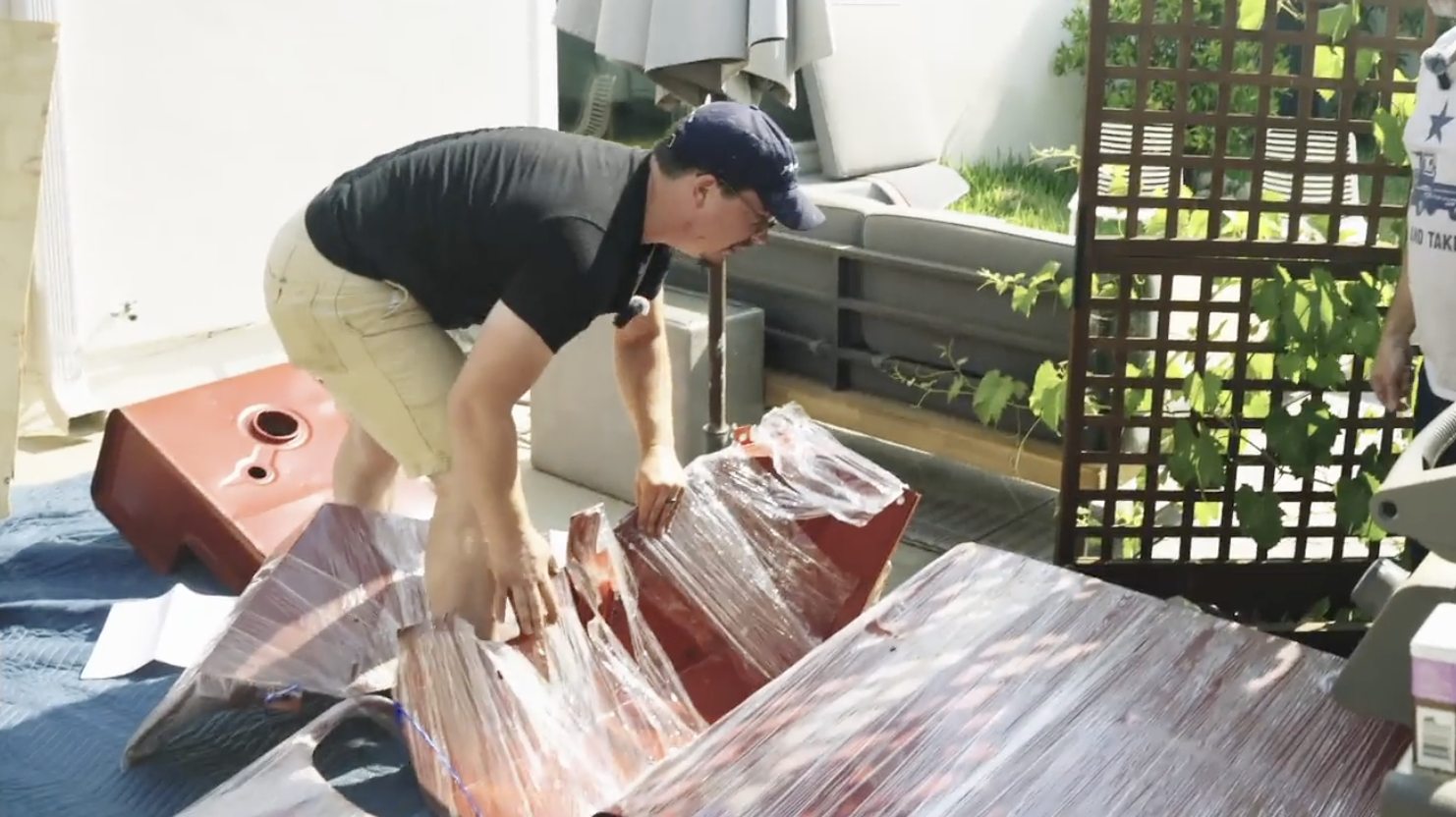
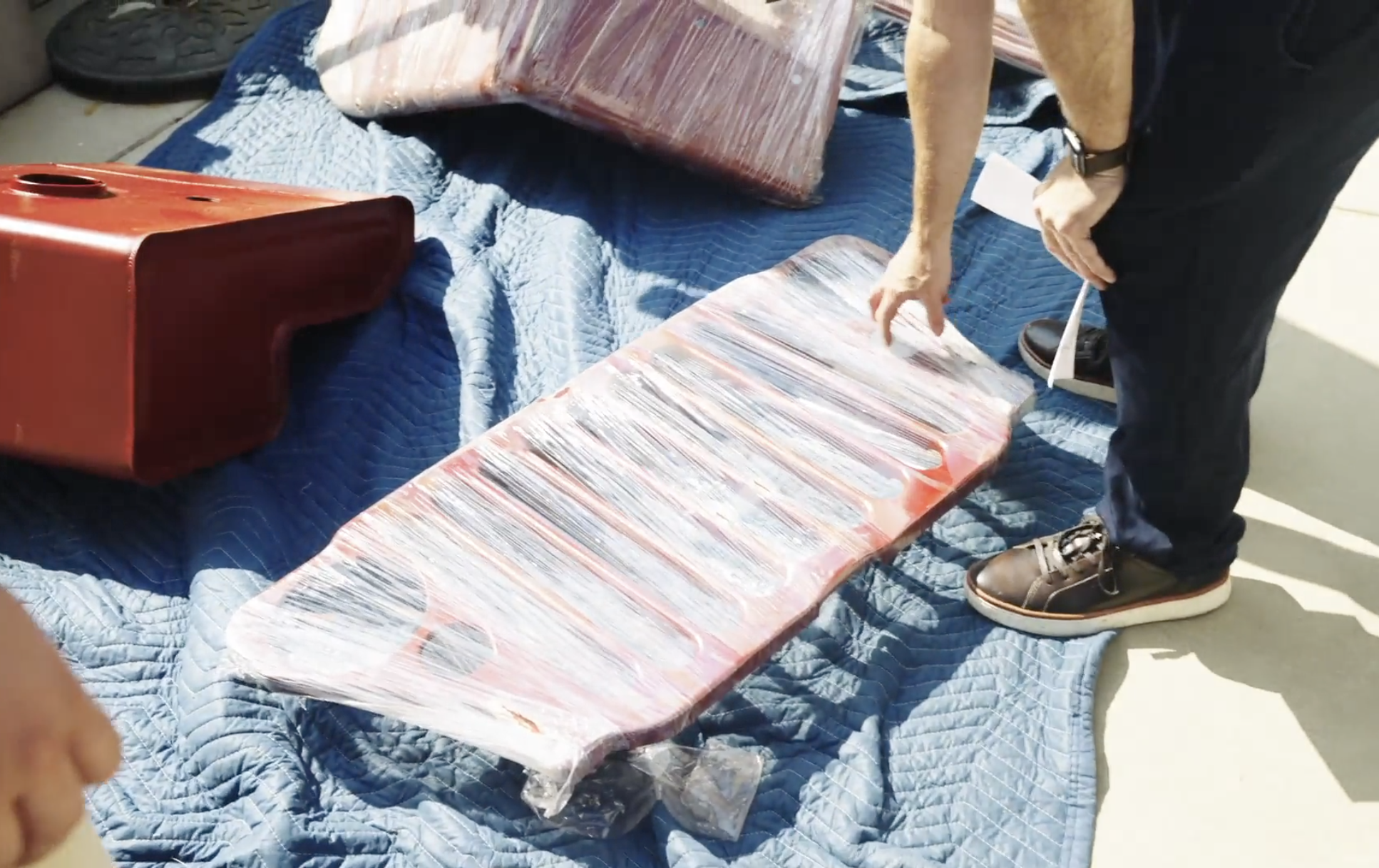
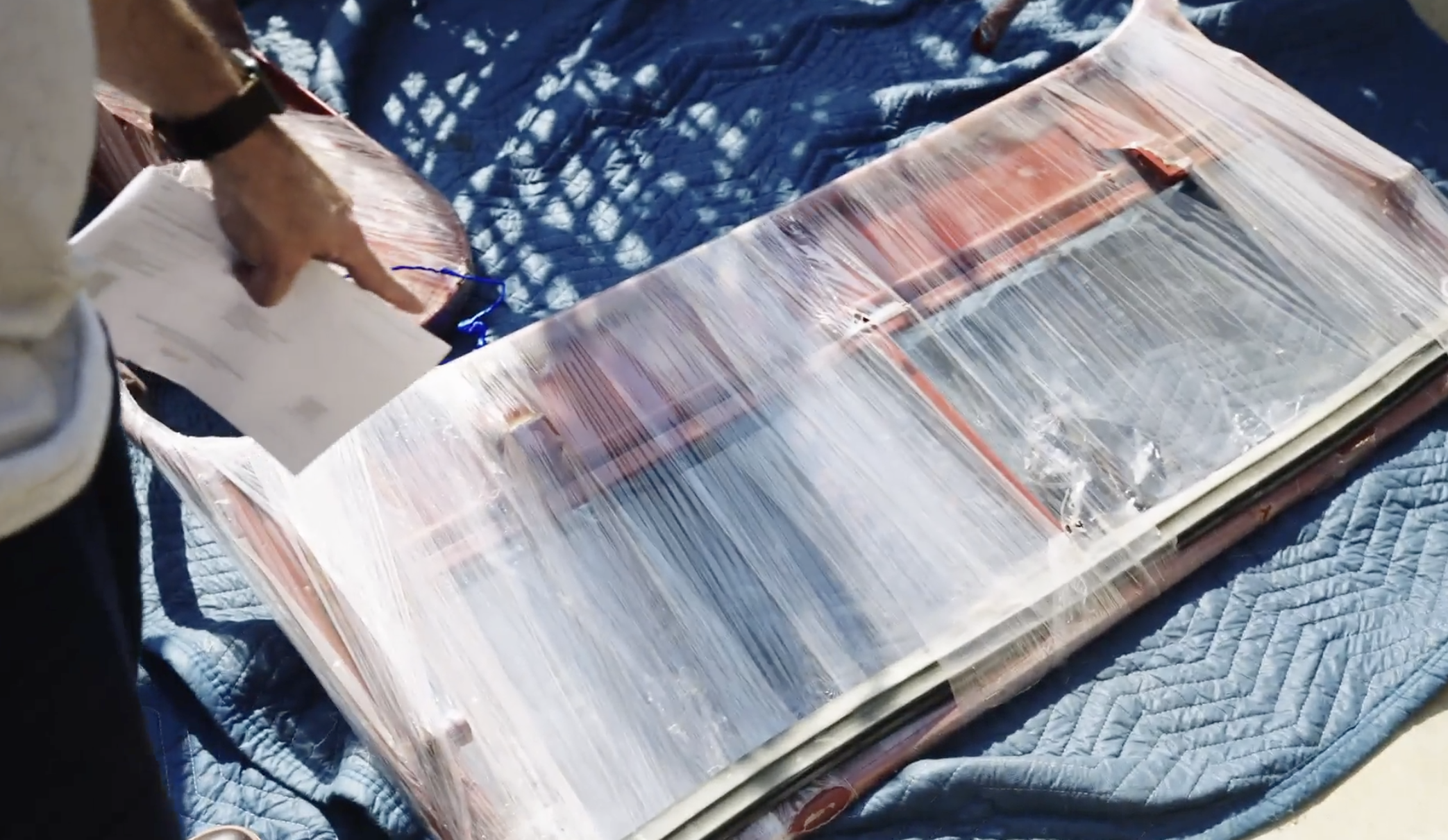
Here’s a closer look at that tub with the crate’s side removed:
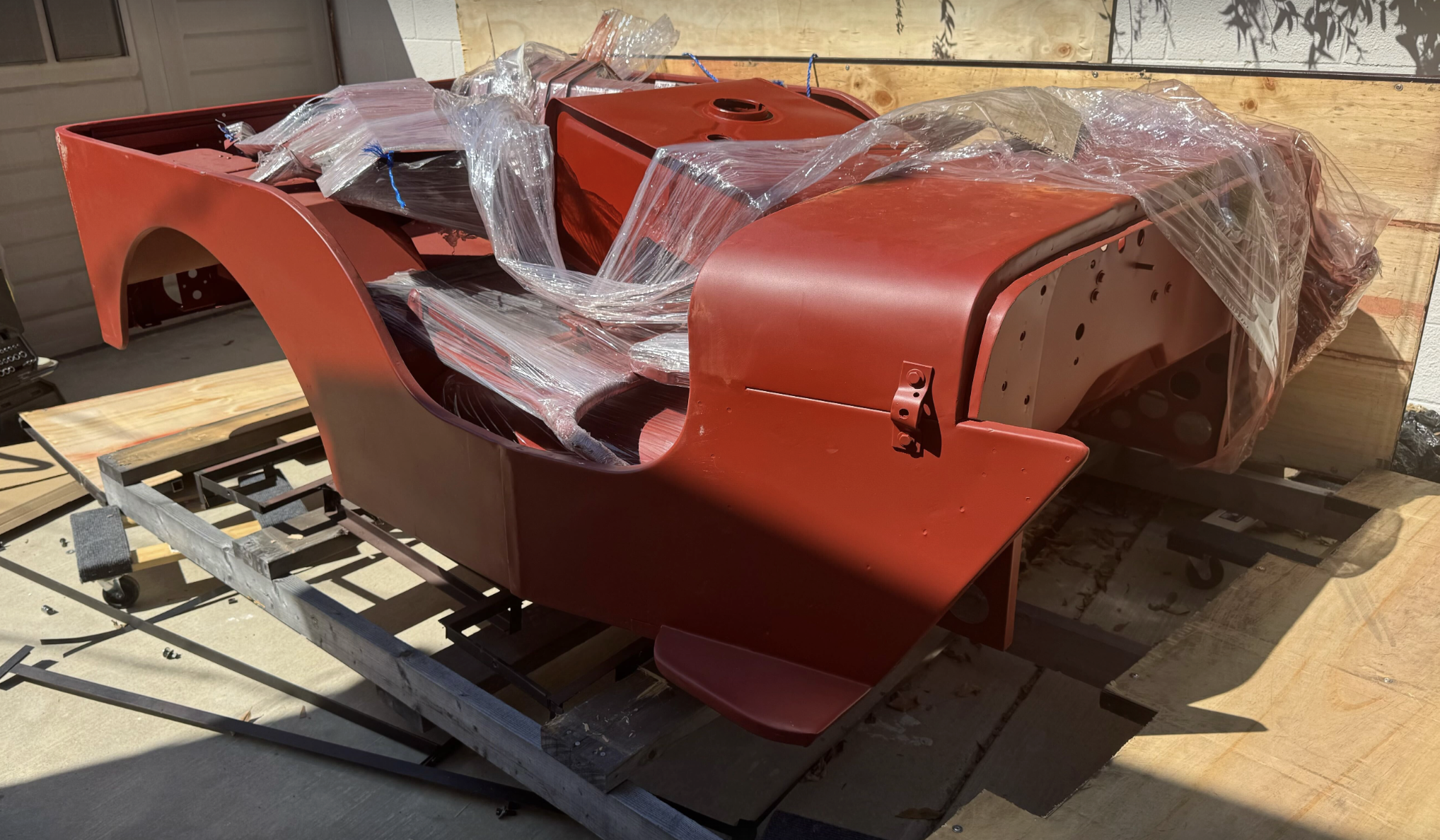
It appears to have made it to the states unscathed, free from major scratches or dings. The packaging included a custom steel box made of angle iron, with some thin wood screwed on and some straps holding it together. Here you can see some of the structure specially shaped to hold the World War II Jeep just so.
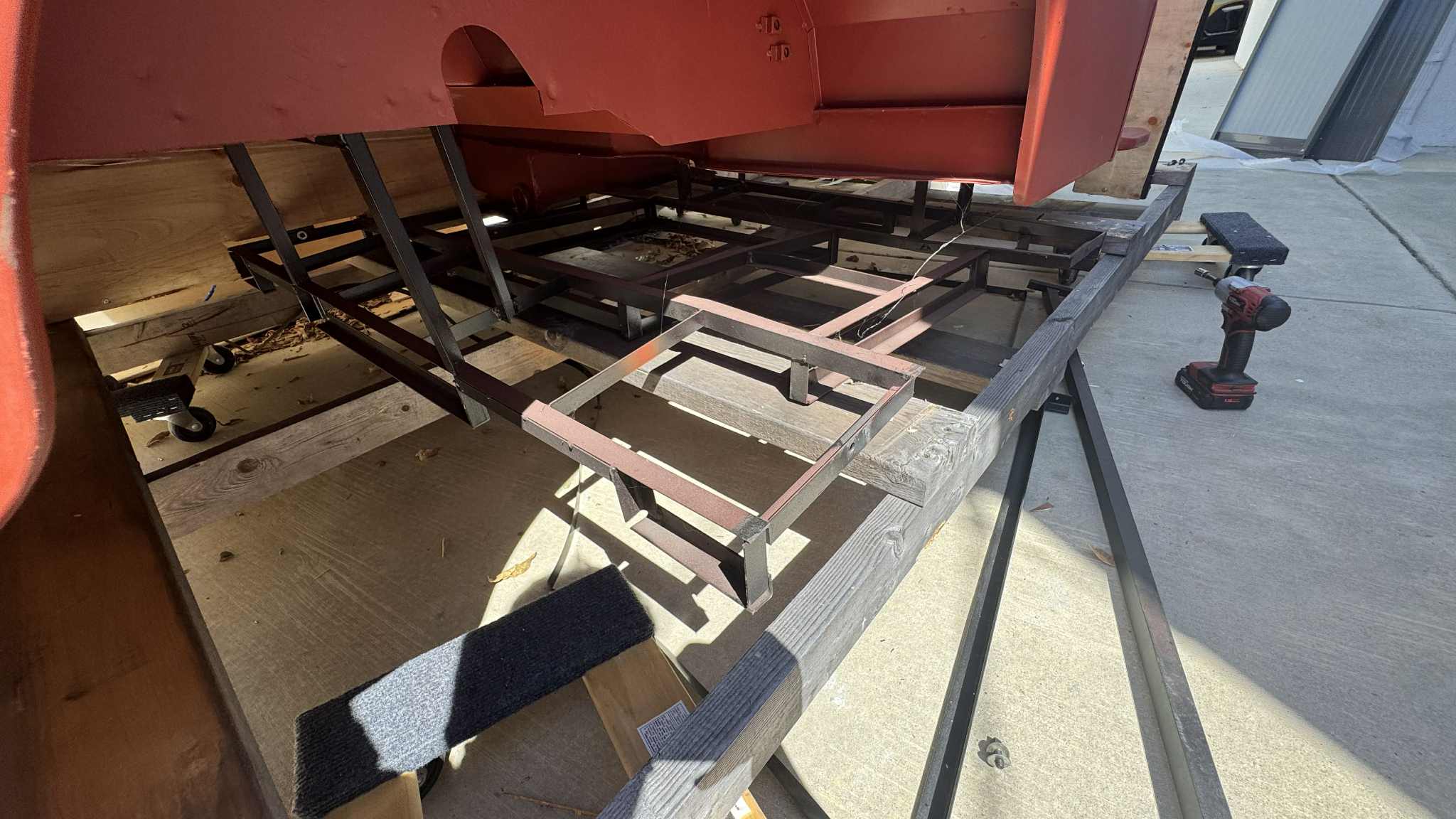
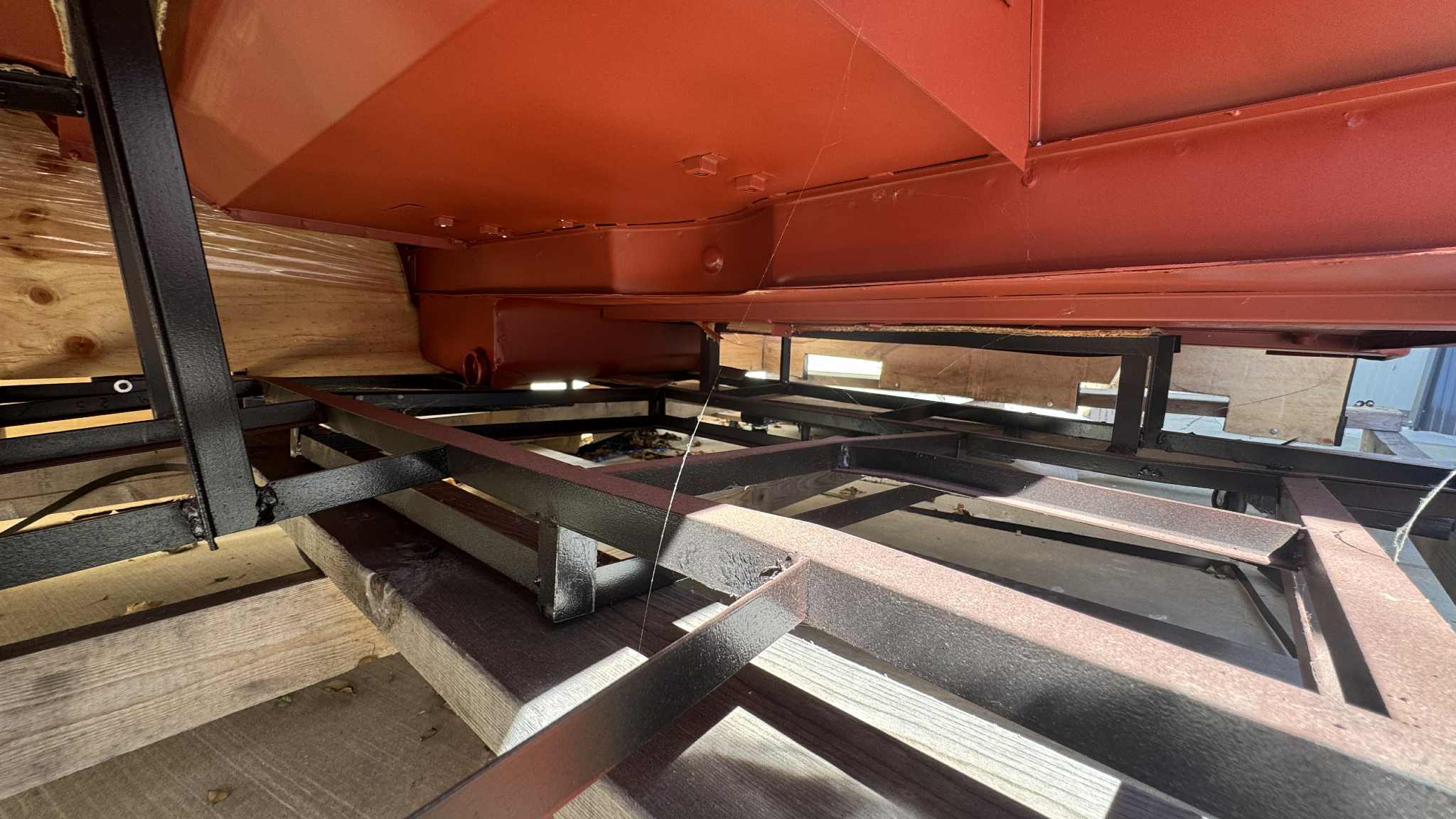
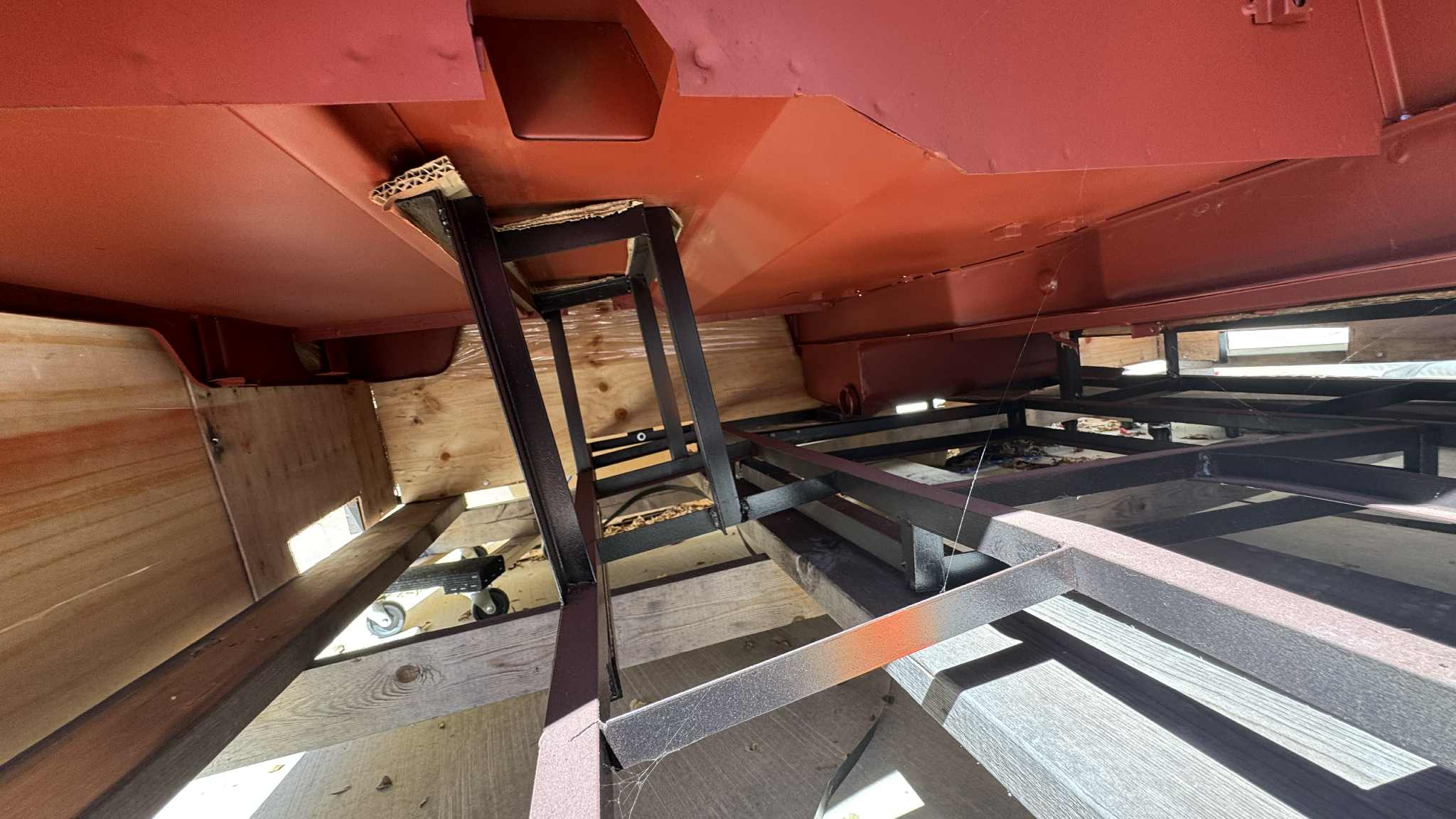
Otherwise there was a pallet from C&C, and just a bunch of plastic wrap and cardboard:
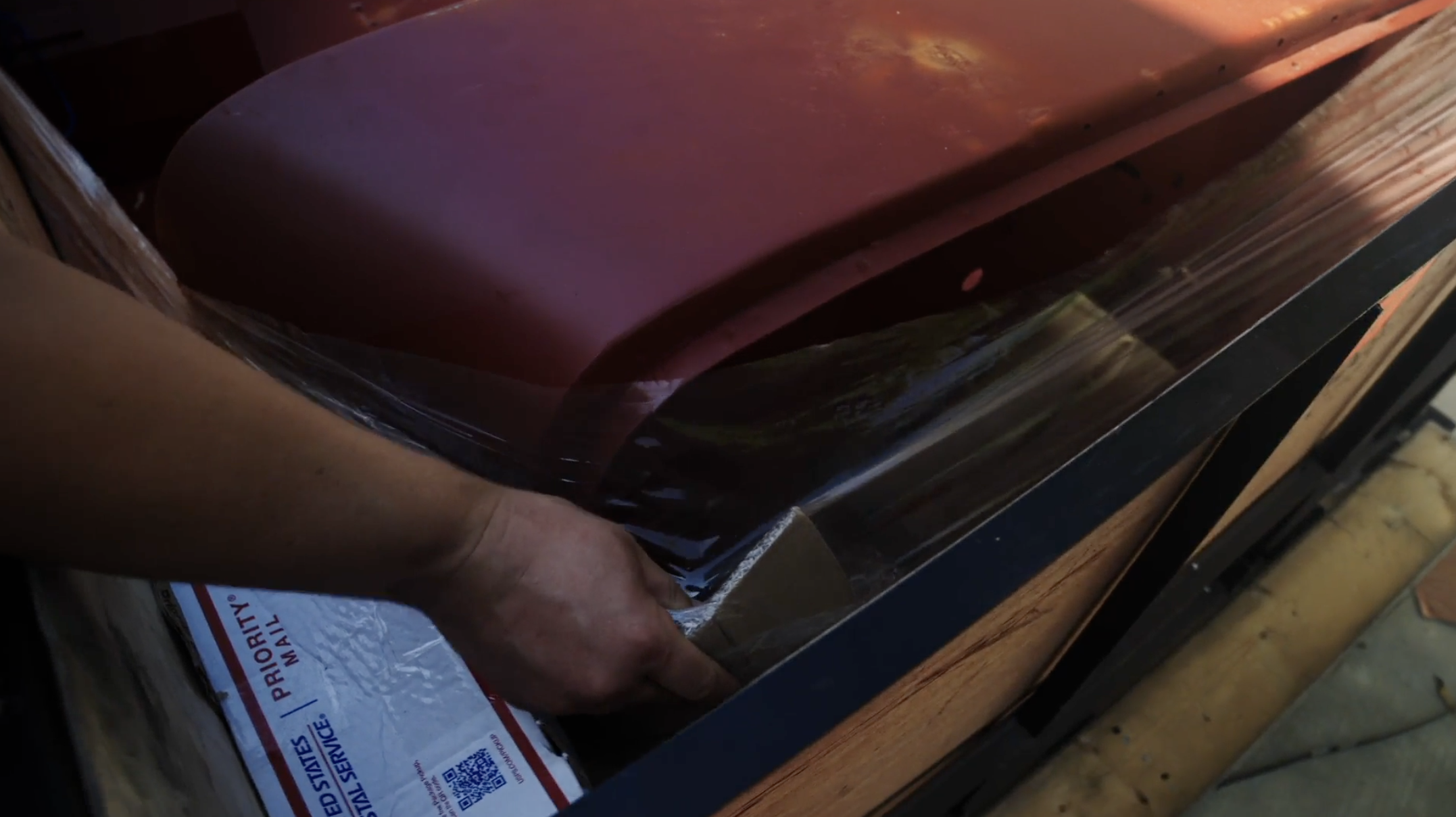
I never thought I’d unbox a brand new body of the greatest Jeep of all time, but here at The Autopian — and especially with the support of our friends at eBay — dreams come true. More on this wild project coming soon!
[Ed note: David mentioned the idea of building a brand new WWII Jeep to the team at eBay, and they loved the idea so much they said, “How can we help?” Their support and David’s Jeep-obsession are the fuel behind this crazy build. – MH]

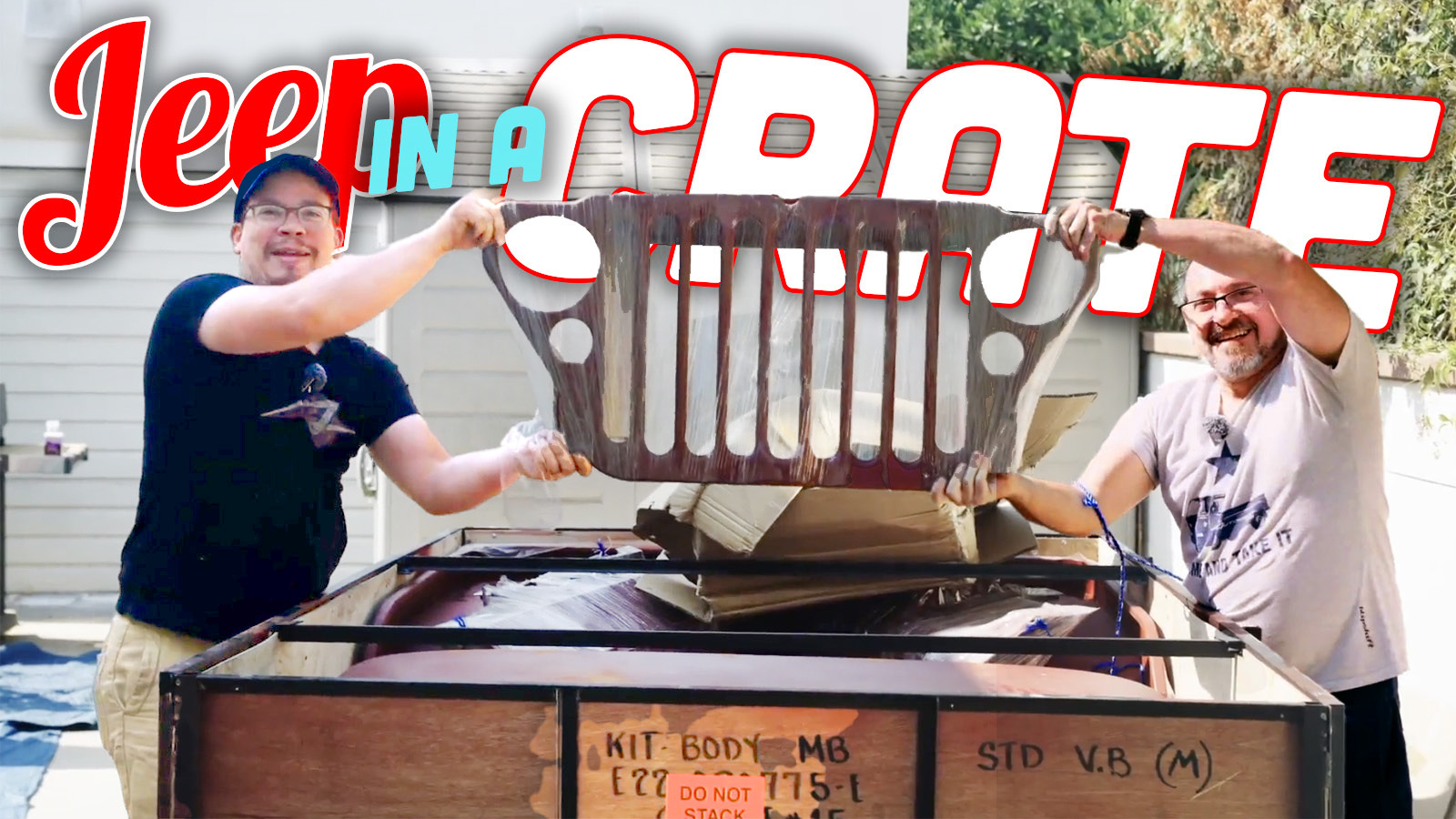



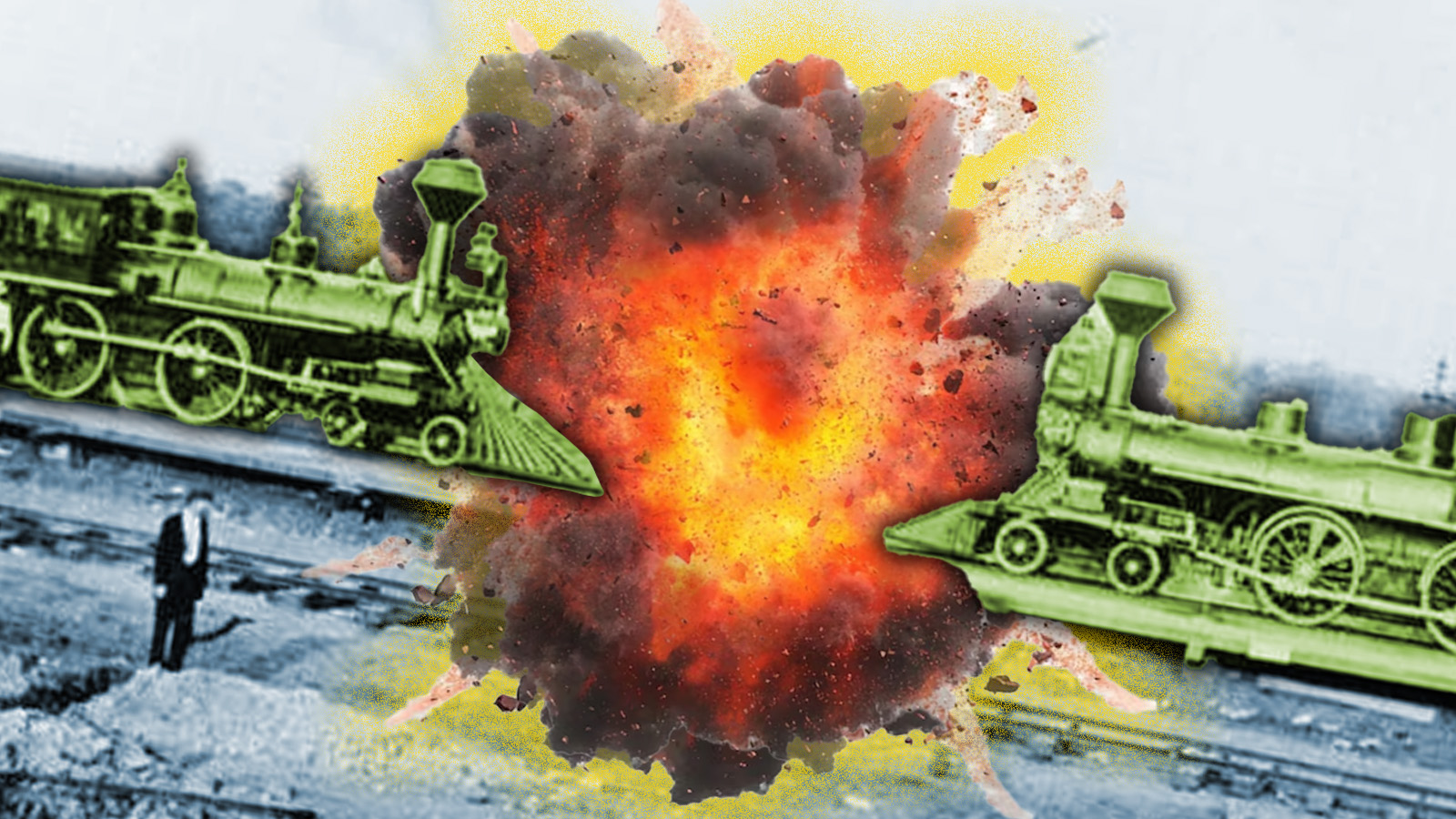

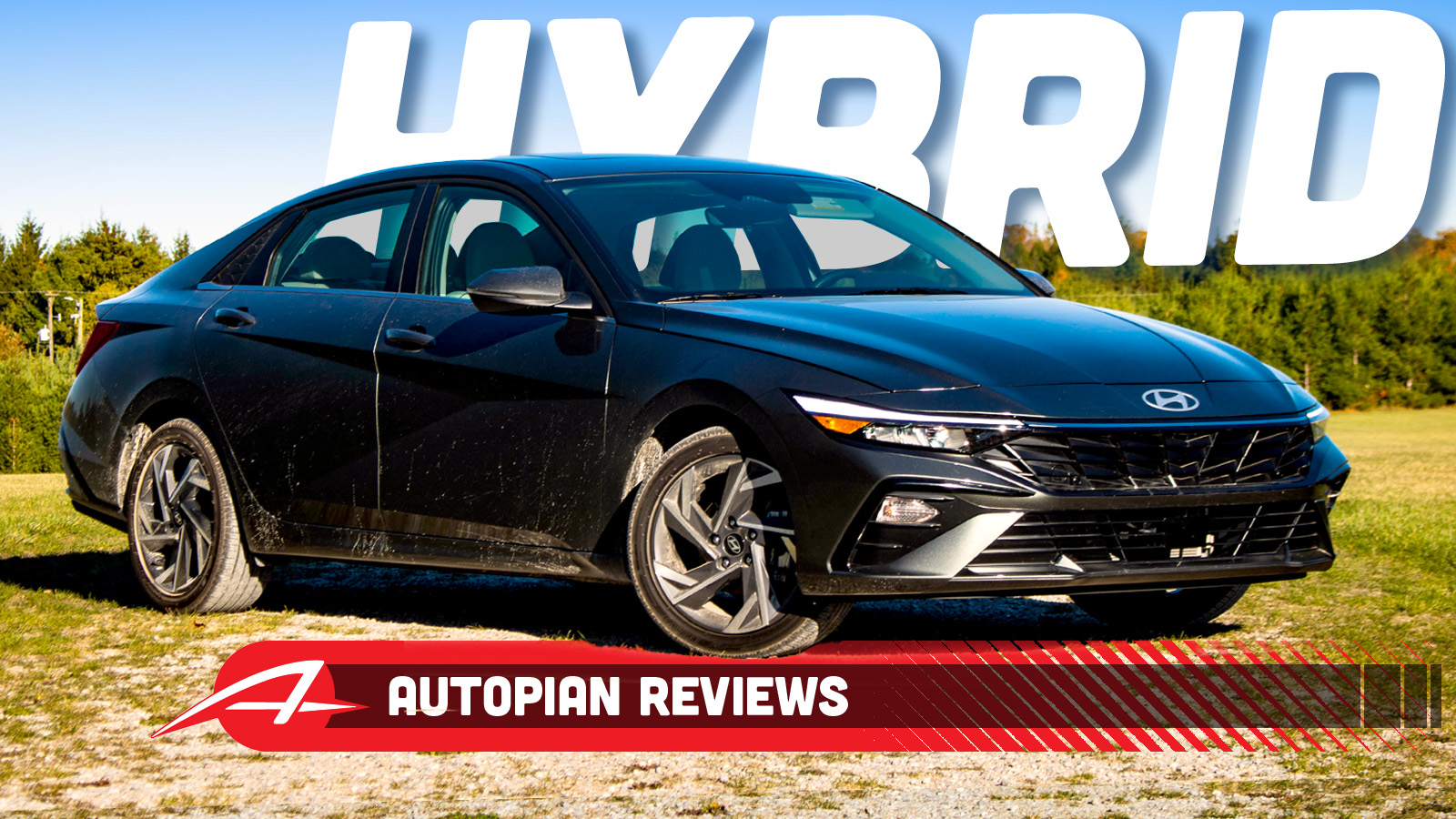
Most comic books in the late 50s/early 60s had an ad for a $53 Jeep in a box. What I failed to consider was it might have been a scam to separate young people from their $53. Lucky for me, my family lived in a small apartment , no room for a Jeep in a box. Also, $53 was about. $52 more than I had, so I was safe. I wanted that Jeep sooooo bad.
When do you add the rust?